How to Start a Cover Letter (Examples Included)
Mike Simpson 0 Comments


By Mike Simpson
When you’re writing a cover letter, nailing the opening is a must. Your cover letter introduction has to draw the hiring manager in, giving them a clear reason to keep reading. That’s why learning how to start a cover letter is so vital; it’s your doorway to success.
After all, more than eight-in-10 recruiters feel that an awesome cover letter is enough to land a candidate an interview even if their resume is only a partial fit for the job. Cool, right?
So, are you ready to make sure that your cover letter opening is everything it can be? Great! Here’s what you need to know.
What Is a Cover Letter?
Alright, let’s begin with the basics. Before you can learn how to start a letter to the hiring manager, it’s helpful to know what a cover letter is in the first place.
We’ve actually taken several deep dives into the world of cover letters, including how to address a cover letter , the best cover letter format , how to end a cover letter , and a full overview of how to write a cover letter .
But the basic gist is that a cover letter is a written elevator pitch. It acts as an introduction to what you have to offer, with a bit more flavor than you can put in a resume.
In many cases, your cover letter is the absolute first impression you’ll make on a hiring manager. As they read, they get a feel for who you are, as well as what you bring to the table.
Do cover letters really matter that much? Yes, they do. Overall, 49 percent of hiring managers think that receiving a cover letter is important to the hiring process, which is a pretty good indication that they value them.
So, what are the parts of a cover letter? In most cases, a cover letter has:
- Contact Information
- Opening Paragraph
- Body Paragraphs
- Closing Paragraph
- Closing Sentiment
While that seems like a lot, it really isn’t. In most cases, you end up with about a page or so of content. After all, a cover letter isn’t an autobiography of your life; it’s a concise, tailored introduction to who you are as a professional.
Generally, when you’re trying to figure out how to start a cover letter, what you need to focus on are the salutation and the opening paragraph. Those are what make the first impression and usually play a big role in whether the hiring manager reads the whole thing or not.
You may want to dig a little deeper, making sure your opening line really packs a punch. But, really, that’s all part of creating a great opening paragraph, isn’t it? Just keep in mind that your leading sentence needs to be an attention-grabber, and you’re in good shape.
Now, is your cover letter opening more important than the rest of the letter? Well, yes and no. If your start to your letter isn’t strong, there’s a chance the hiring manager won’t finish reading it. That means a fantastic cover letter introduction is essential.
But the rest matters, too. In the end, you want your first impression to be a doozy. It’s just that, if you don’t nail the opening to your cover letter, the rest may never get a glance.
Common Mistakes When Starting a Cover Letter
Before we dive into how to start a cover letter, let’s talk about some cover letter introduction mistakes you want to avoid. After all, a misstep at this early stage can cost you the job, so you really need to make sure you get it right.
First, one of the biggest mistakes you can make is not tailoring the content to the position. When you write a cover letter, you are speaking to one particular hiring manager, not everyone who may ever want to hire you. If you don’t focus the content on that specific job, you might not connect with that hiring manager, causing them to move onto a different candidate.
Second, being too generic can come back to bite you. You want to stand out from the crowd, so you need to make sure your cover letter introduction feels a bit unique.
Third, choosing the wrong salutation – or not including one at all – can potentially lead to some trouble. If you go the wrong way, you may not connect with the hiring manager as well or could even offend them a bit. That’s no good.
Finally, spelling and grammar mistakes are a huge deal. They make it look like you lack attention to detail, and that isn’t going to win you any fans.
How to Start a Cover Letter
In many cases, figuring out how to start a letter for your job application is much easier if you take it one step at a time. It lets you tackle everything in succession and gives you a chance to focus on each critical part, increasing the odds that you’ll genuinely nail it.
Here’s a quick step-by-step guide on how to start a letter when you’re trying o land a job:
1. Choose the Right Salutation
The salutation in your cover letter opening serves as a greeting. It’s a chance to acknowledge the reader directly, even if just for a brief second.
Ideally, you want to address the hiring manager by name, using an approach like:
Dear [Mr./Mrs./Ms./Dr.] [First Name] [Last Name]
Now, you can potentially add one more option to the list: Mx. This is a relatively new gender-neutral addition that’s favored by people who consider themselves nonbinary.
Generally speaking, you should only use “Mx.” if you are completely, 100 percent certain that it’s the hiring manager’s preferred title. You don’t want to go with it simply because you don’t know the hiring manager’s gender. Why? Well, since it’s a newer option, not everyone is familiar with it, so some hiring managers might think it’s a typo.
Additionally, people may have a variety of opinions about “Mx.,” and not all of them are positive. Since it’s a bit controversial in certain circles, you could offend a hiring manager by using it if that isn’t what they prefer.
So, what do you do if you know the hiring manager’s name but not their gender or preferred title? Worst case, go with “Dear [First Name] [Last Name]” instead. It’s a bit less formal, but it may be better than getting the title wrong.
If you genuinely don’t know the hiring manager’s name – and can’t figure it out with some research – you can try:
- Dear [Job Title/Role] – Dear Hiring Manager, Dear Operations Manager, Dear VP of Sales, etc.
- Dear [Department] – Dear IT Department, Dear Marketing Department, etc.
Those aren’t as personal, but they can do the trick. They at least speak to a particular individual, making it clear that you had a certain recipient in mind. As a result, they are much better than more generic alternatives.
What about “To Whom It May Concern?” Well, we’ve taken a deep dive into how to use to whom it may concern . But, in most cases, that isn’t your best. It feels outdated, for one. Plus, it doesn’t have a particular reader in mind, which isn’t ideal.
The same goes for “Dear Sir or Madam.” Along with being generic and incredibly old-school, it’s also a bit awkward. Plus, it makes it seem like you didn’t even try to come up with something better, and that’s never good.
2. Nail the Opening Sentence
Your opening sentence in your cover letter is what really needs to draw the hiring manager in. As a result, you want to make sure that it packs a wallop.
Usually, you have a few options that can pull this off. First, if you know someone at the company who referred you to the position, you can try name-dropping. Many hiring managers favor direct referrals, so it’s alright to make that connection clear from the beginning.
Second, you can lead off with a relevant accomplishment. This one can get a little tricky to do well. You really have to relate it to something in the role, and that isn’t always easy to manage without using a sentence or so to build in some context.
Finally, you can focus on your excitement. Hiring managers like people who seem passionate about the opportunity, so this route could let you start your cover letter on a great note.
With all of these, you want to make sure the opening sentence taps on the position you’re trying to land. It’s smart to mention the job title, department, and company, as that ensures the hiring manager knows why you’re writing. If it doesn’t fit in the first sentence, then it needs to come in on the second.
3. Round Out the First Paragraph
Generally, your cover letter opening paragraph is going to be two or four sentences long. If you didn’t get it into your opening sentence, use your second one to mention the job opening. That way, the hiring manager understands exactly why you reached out.
After that, it’s time to tap on some relevant skills. Use the job ad to identify high-priority capabilities. Next, treat them like keywords, using the exact same words and phrases to increase your odds of looking like a great match (and getting past an automated screener).
4. Quantify the Details
Numbers stand out visually in a cover letter. They actually draw the eye, as they aren’t as widely used as letters and most forms of punctuation.
By quantifying a detail or two, you create visual interest. Plus, you’re giving the hiring manager some helpful context about what you’ve achieved, something that can make you look like a stronger candidate.
3 Cover Letter Starting Samples
Sometimes, nothing helps bring some tips to life like a handy example or three. If you want to make sure you understand how to start a cover letter or are looking for some samples that you can use as a template, here are three cover letter introduction examples, each representing a different approach.
1. When You Were Referred
Dear Mr. John Doe:
During my 6 years as a sales professional, I’ve had the opportunity to collaborate with a number of amazing professionals, including Jane Smith, a member of your team who recommended I apply for the Account Manager opening at ABC Inc. In my last position, I managed a portfolio of 25 enterprise-level clients while also boosting sales by 15 percent year-over-year during my tenure. I believe that my penchant for strategic thinking, as well as my strong negotiation and communication skills, make me an exceptional fit for your position.
2. Leading with an Achievement
Dear IT Department:
Over the past 4 years, I’ve focused my career on the world of project management, recently earning by Project Management Professional (PMP) certification. Additionally, I personally oversaw five $50k+ development projects concurrently, each of which was finished on time and within budget. I feel that my experience as a leader, as well as my expertise in risk assessment and cost management, makes me an ideal fit for the Project Manager position at XYZ Corp.
3. Going the Excitement Route
Dear Hiring Manager:
When I saw the administrative assistant opening at ABC Company, I immediately knew I wanted to apply. As an office assistant with 6 years of experience, I have honed many key skills you’re hoping to find, including scheduling, report writing, and customer service. Last year, among 50 nominated colleagues, I was even recognized as the Employee of the Year, largely because of my passion and dedication to my work, something that I would love to bring to ABC Company.
Putting It All Together
Ultimately, you should now understand how to start a cover letter off in the best way possible. Use all of the tips above, and turn to the cover letter opening samples to serve as guides. That way, you can create an introduction that captures the hiring manager’s attention and keeps them reading, giving you a chance to showcase even more about why you’re such an awesome candidate.
And as always, Good luck!

Co-Founder and CEO of TheInterviewGuys.com. Mike is a job interview and career expert and the head writer at TheInterviewGuys.com.
His advice and insights have been shared and featured by publications such as Forbes , Entrepreneur , CNBC and more as well as educational institutions such as the University of Michigan , Penn State , Northeastern and others.
Learn more about The Interview Guys on our About Us page .
About The Author
Mike simpson.

Co-Founder and CEO of TheInterviewGuys.com. Mike is a job interview and career expert and the head writer at TheInterviewGuys.com. His advice and insights have been shared and featured by publications such as Forbes , Entrepreneur , CNBC and more as well as educational institutions such as the University of Michigan , Penn State , Northeastern and others. Learn more about The Interview Guys on our About Us page .
Copyright © 2024 · TheInterviewguys.com · All Rights Reserved
- Our Products
- Case Studies
- Interview Questions
- Jobs Articles
- Members Login

How it works
Transform your enterprise with the scalable mindsets, skills, & behavior change that drive performance.
Explore how BetterUp connects to your core business systems.
We pair AI with the latest in human-centered coaching to drive powerful, lasting learning and behavior change.
Build leaders that accelerate team performance and engagement.
Unlock performance potential at scale with AI-powered curated growth journeys.
Build resilience, well-being and agility to drive performance across your entire enterprise.
Transform your business, starting with your sales leaders.
Unlock business impact from the top with executive coaching.
Foster a culture of inclusion and belonging.
Accelerate the performance and potential of your agencies and employees.
See how innovative organizations use BetterUp to build a thriving workforce.
Discover how BetterUp measurably impacts key business outcomes for organizations like yours.
A demo is the first step to transforming your business. Meet with us to develop a plan for attaining your goals.

- What is coaching?
Learn how 1:1 coaching works, who its for, and if it's right for you.
Accelerate your personal and professional growth with the expert guidance of a BetterUp Coach.
Types of Coaching
Navigate career transitions, accelerate your professional growth, and achieve your career goals with expert coaching.
Enhance your communication skills for better personal and professional relationships, with tailored coaching that focuses on your needs.
Find balance, resilience, and well-being in all areas of your life with holistic coaching designed to empower you.
Discover your perfect match : Take our 5-minute assessment and let us pair you with one of our top Coaches tailored just for you.

Research, expert insights, and resources to develop courageous leaders within your organization.
Best practices, research, and tools to fuel individual and business growth.
View on-demand BetterUp events and learn about upcoming live discussions.
The latest insights and ideas for building a high-performing workplace.
- BetterUp Briefing
The online magazine that helps you understand tomorrow's workforce trends, today.
Innovative research featured in peer-reviewed journals, press, and more.
Founded in 2022 to deepen the understanding of the intersection of well-being, purpose, and performance
We're on a mission to help everyone live with clarity, purpose, and passion.
Join us and create impactful change.
Read the buzz about BetterUp.
Meet the leadership that's passionate about empowering your workforce.
For Business
For Individuals
How to write a great cover letter in 2024: tips and structure

A cover letter is a personalized letter that introduces you to a potential employer, highlights your qualifications, and explains why you're a strong fit for a specific job.
Hate or love them, these brief documents allow job seekers to make an impression and stand out from the pile of other applications. Penning a thoughtful cover letter shows the hiring team you care about earning the position.
Here’s everything you need to know about how to write a cover letter — and a great one, at that.
What is a cover letter and why does it matter?
A professional cover letter is a one-page document you submit alongside your CV or resume as part of a job application. Typically, they’re about half a page or around 150–300 words.
An effective cover letter doesn’t just rehash your CV; it’s your chance to highlight your proudest moments, explain why you want the job, and state plainly what you bring to the table.
Show the reviewer you’re likable, talented, and will add to the company’s culture . You can refer to previous jobs and other information from your CV, but only if it helps tell a story about you and your career choices .
What 3 things should you include in a cover letter?
A well-crafted cover letter can help you stand out to potential employers. To make your cover letter shine, here are three key elements to include:
1. Personalization
Address the hiring manager or recruiter by name whenever possible. If the job posting doesn't include a name, research to find out who will be reviewing applications. Personalizing your cover letter shows that you've taken the time to tailor your application to the specific company and role.
2. Highlight relevant achievements and skills
Emphasize your most relevant skills , experiences, and accomplishments that directly relate to the job you're applying for. Provide specific examples of how your skills have benefited previous employers and how they can contribute to the prospective employer's success. Use quantifiable achievements , such as improved efficiency, cost savings, or project success, to demonstrate your impact.
3. Show enthusiasm and fit
Express your enthusiasm for the company and the position you're applying for. Explain why you are interested in this role and believe you are a good fit for the organization. Mention how your values, goals, and skills align with the company's mission and culture. Demonstrating that you've done your research can make a significant impression.
What do hiring managers look for in a cover letter?
Employers look for several key elements in a cover letter. These include:
Employers want to see that your cover letter is specifically tailored to the position you are applying for. It should demonstrate how your skills, experiences, and qualifications align with the job requirements.
Clear and concise writing
A well-written cover letter is concise, easy to read, and error-free. Employers appreciate clear and effective communication skills , so make sure your cover letter showcases your ability to express yourself effectively.
Demonstrated knowledge of the company
Employers want to see that you are genuinely interested in their organization. Mention specific details about the company, such as recent achievements or projects, to show that you are enthusiastic about joining their team.
Achievements and accomplishments
Highlight your relevant achievements and accomplishments that demonstrate your qualifications for the position. Use specific examples to showcase your skills and show how they can benefit the employer.
Enthusiasm and motivation
Employers want to hire candidates who are excited about the opportunity and motivated to contribute to the company's success. Express your enthusiasm and passion for the role and explain why you are interested in working for the company.
Professionalism
A cover letter should be professional in tone and presentation. Use formal language, address the hiring manager appropriately, and follow standard business letter formatting.

How do you structure a cover letter?
A well-structured cover letter follows a specific format that makes it easy for the reader to understand your qualifications and enthusiasm for the position. Here's a typical structure for a cover letter:
Contact information
Include your name, address, phone number, and email address at the top of the letter. Place your contact information at the beginning so that it's easy for the employer to reach you.
Employer's contact information
Opening paragraph, middle paragraph(s), closing paragraph, complimentary close, additional contact information.
Repeat your contact information (name, phone number, and email) at the end of the letter, just in case the employer needs it for quick reference.
Remember to keep your cover letter concise and focused. It should typically be no more than one page in length. Proofread your letter carefully to ensure it is free from spelling and grammatical errors. Tailor each cover letter to the specific job application to make it as relevant and impactful as possible.
How to write a good cover letter (with examples)
The best letters are unique, tailored to the job description, and written in your voice — but that doesn’t mean you can’t use a job cover letter template.
Great cover letters contain the same basic elements and flow a certain way. Take a look at this cover letter structure for ref erence while you construct your own.
1. Add a header and contact information
While reading your cover letter, the recruiter shouldn’t have to look far to find who wrote it. Your document should include a basic heading with the following information:
- Pronouns (optional)
- Location (optional)
- Email address
- Phone number (optional)
- Relevant links, such as your LinkedIn profile , portfolio, or personal website (optional)
You can pull this information directly from your CV. Put it together, and it will look something like this:
Christopher Pike
San Francisco, California
Alternatively, if the posting asks you to submit your cover letter in the body of an email, you can include this information in your signature. For example:
Warm regards,
Catherine Janeway
Bloomington, Indiana
(555) 999 - 2222

2. Include a personal greeting
Always begin your cover letter by addressing the hiring manager — preferably by name. You can use the person’s first and last name. Make sure to include a relevant title, like Dr., Mr., or Ms. For example, “Dear Mr. John Doe.”
Avoid generic openings like “To whom it may concern,” “Dear sir or madam,” or “Dear hiring manager.” These introductions sound impersonal — like you’re copy-pasting cover letters — and can work against you in the hiring process.
Be careful, though. When using someone’s name, you don’t want to use the wrong title or accidentally misgender someone. If in doubt, using only their name is enough. You could also opt for a gender-neutral title, like Mx.
Make sure you’re addressing the right person in your letter — ideally, the person who’s making the final hiring decision. This isn’t always specified in the job posting, so you may have to do some research to learn the name of the hiring manager.
3. Draw them in with an opening story
The opening paragraph of your cover letter should hook the reader. You want it to be memorable, conversational, and extremely relevant to the job you’re pursuing.
There’s no need for a personal introduction — you’ve already included your name in the heading. But you should make reference to the job you’re applying for. A simple “Thank you for considering my application for the role of [job title] at [company],” will suffice.
Then you can get into the “Why” of your job application. Drive home what makes this specific job and this company so appealing to you. Perhaps you’re a fan of their products, you’re passionate about their mission, or you love their brand voice. Whatever the case, this section is where you share your enthusiasm for the role.
Here’s an example opening paragraph. In this scenario, you’re applying for a digital marketing role at a bicycle company:
“Dear Mr. John Doe,
Thank you for considering my application for the role of Marketing Coordinator at Bits n’ Bikes.
My parents bought my first bike at one of your stores. I’ll never forget the freedom I felt when I learned to ride it. My father removed my training wheels, and my mom sent me barrelling down the street. You provide joy to families across the country — and I want to be part of that.”
4. Emphasize why you’re best for the job
Your next paragraphs should be focused on the role you’re applying to. Highlight your skill set and why you’re a good fit for the needs and expectations associated with the position. Hiring managers want to know what you’ll bring to the job, not just any role.
Start by studying the job description for hints. What problem are they trying to solve with this hire? What skills and qualifications do they mention first or more than once? These are indicators of what’s important to the hiring manager.
Search for details that match your experience and interests. For example, if you’re excited about a fast-paced job in public relations, you might look for these elements in a posting:
- They want someone who can write social media posts and blog content on tight deadlines
- They value collaboration and input from every team member
- They need a planner who can come up with strong PR strategies
Highlight how you fulfill these requirements:
“I’ve always been a strong writer. From blog posts to social media, my content pulls in readers and drives traffic to product pages. For example, when I worked at Bits n’ Bikes, I developed a strategic blog series about bike maintenance that increased our sales of spare parts and tools by 50% — we could see it in our web metrics.
Thanks to the input of all of our team members, including our bike mechanics, my content delivered results.”
5. End with a strong closing paragraph and sign off gracefully
Your closing paragraph is your final chance to hammer home your enthusiasm about the role and your unique ability to fill it. Reiterate the main points you explained in the body paragraphs and remind the reader of what you bring to the table.
You can also use the end of your letter to relay other important details, like whether you’re willing to relocate for the job.
When choosing a sign-off, opt for a phrase that sounds professional and genuine. Reliable options include “Sincerely” and “Kind regards.”
Here’s a strong closing statement for you to consider:
“I believe my enthusiasm, skills, and work experience as a PR professional will serve Bits n’ Bikes very well. I would love to meet to further discuss my value-add as your next Director of Public Relations. Thank you for your consideration. I hope we speak soon.

Tips to write a great cover letter that compliments your resume
When writing your own letter, try not to copy the example excerpts word-for-word. Instead, use this cover letter structure as a baseline to organize your ideas. Then, as you’re writing, use these extra cover letter tips to add your personal touch:
- Keep your cover letter different from your resume : Your cover letter should not duplicate the information on your resume. Instead, it should provide context and explanations for key points in your resume, emphasizing how your qualifications match the specific job you're applying for.
- Customize your cover letter . Tailor your cover letter for each job application. Address the specific needs of the company and the job posting, demonstrating that you've done your homework and understand their requirements.
- Show enthusiasm and fit . Express your enthusiasm for the company and position in the cover letter. Explain why you are interested in working for this company and how your values, goals, and skills align with their mission and culture.
- Use keywords . Incorporate keywords from the job description and industry terms in your cover letter. This can help your application pass through applicant tracking systems (ATS) and demonstrate that you're well-versed in the field.
- Keep it concise . Your cover letter should be succinct and to the point, typically no more than one page. Focus on the most compelling qualifications and experiences that directly support your application.
- Be professional . Maintain a professional tone and structure in your cover letter. Proofread it carefully to ensure there are no errors.
- Address any gaps or concerns . If there are gaps or concerns in your resume, such as employment gaps or a change in career direction, briefly address them in your cover letter. Explain any relevant circumstances and how they have shaped your qualifications and determination.
- Provide a call to action . Conclude your cover letter with a call to action, inviting the employer to contact you for further discussion. Mention that you've attached your resume for their reference.
- Follow the correct format . Use a standard cover letter format like the one above, including your contact information, a formal salutation, introductory and closing paragraphs, and your signature. Ensure that it complements your resume without redundancy.
- Pick the right voice and tone . Try to write like yourself, but adapt to the tone and voice of the company. Look at the job listing, company website, and social media posts. Do they sound fun and quirky, stoic and professional, or somewhere in-between? This guides your writing style.
- Tell your story . You’re an individual with unique expertise, motivators, and years of experience. Tie the pieces together with a great story. Introduce how you arrived at this point in your career, where you hope to go , and how this prospective company fits in your journey. You can also explain any career changes in your resume.
- Show, don’t tell . Anyone can say they’re a problem solver. Why should a recruiter take their word for it if they don’t back it up with examples? Instead of naming your skills, show them in action. Describe situations where you rose to the task, and quantify your success when you can.
- Be honest . Avoid highlighting skills you don’t have. This will backfire if they ask you about them in an interview. Instead, shift focus to the ways in which you stand out.
- Avoid clichés and bullet points . These are signs of lazy writing. Do your best to be original from the first paragraph to the final one. This highlights your individuality and demonstrates the care you put into the letter.
- Proofread . Always spellcheck your cover letter. Look for typos, grammatical errors, and proper flow. We suggest reading it out loud. If it sounds natural rolling off the tongue, it will read naturally as well.

Common cover letter writing FAQs
How long should a cover letter be.
A cover letter should generally be concise and to the point. It is recommended to keep it to one page or less, focusing on the most relevant information that highlights your qualifications and fits the job requirements.
Should I include personal information in a cover letter?
While it's important to introduce yourself and provide your contact information, avoid including personal details such as your age, marital status, or unrelated hobbies. Instead, focus on presenting your professional qualifications and aligning them with the job requirements.
Can I use the same cover letter for multiple job applications?
While it may be tempting to reuse a cover letter, it is best to tailor each cover letter to the specific job you are applying for. This allows you to highlight why you are a good fit for that particular role and show genuine interest in the company.
Do I need to address my cover letter to a specific person?
Whenever possible, it is advisable to address your cover letter to a specific person, such as the hiring manager or recruiter. If the job posting does not provide this information, try to research and find the appropriate contact. If all else fails, you can use a generic salutation such as "Dear Hiring Manager."
Should I include references in my cover letter?
It is generally not necessary to include references in your cover letter. Save this information for when the employer explicitly requests it. Instead, focus on showcasing your qualifications and achievements that make you a strong candidate for the position.
It’s time to start writing your stand-out cover letter
The hardest part of writing is getting started.
Hopefully, our tips gave you some jumping-off points and confidence . But if you’re really stuck, looking at cover letter examples and resume templates will help you decide where to get started.
There are numerous sample cover letters available online. Just remember that you’re a unique, well-rounded person, and your cover letter should reflect that. Using our structure, you can tell your story while highlighting your passion for the role.
Doing your research, including strong examples of your skills, and being courteous is how to write a strong cover letter. Take a breath , flex your fingers, and get typing. Before you know it, your job search will lead to a job interview.
If you want more personalized guidance, a specialized career coach can help review, edit, and guide you through creating a great cover letter that sticks.
Ace your job search
Explore effective job search techniques, interview strategies, and ways to overcome job-related challenges. Our coaches specialize in helping you land your dream job.
Elizabeth Perry, ACC
Elizabeth Perry is a Coach Community Manager at BetterUp. She uses strategic engagement strategies to cultivate a learning community across a global network of Coaches through in-person and virtual experiences, technology-enabled platforms, and strategic coaching industry partnerships. With over 3 years of coaching experience and a certification in transformative leadership and life coaching from Sofia University, Elizabeth leverages transpersonal psychology expertise to help coaches and clients gain awareness of their behavioral and thought patterns, discover their purpose and passions, and elevate their potential. She is a lifelong student of psychology, personal growth, and human potential as well as an ICF-certified ACC transpersonal life and leadership Coach.
3 cover letter examples to help you catch a hiring manager’s attention
Chatgpt cover letters: how to use this tool the right way, write thank you letters after interviews to stand out as job applicant, use professional reference templates to make hiring smoother, send a thank you email after an internship to boost your career, character references: 4 tips for a successful recommendation letter, how to ask for a letter of recommendation (with examples), how to write an impactful cover letter for a career change, how to write a follow-up email 2 weeks after an interview, cv versus resume demystify the differences once and for all, how to create a resume with chatgpt, how and when to write a functional resume (with examples), what are professional references and how to ask for one (examples), how to politely decline a job offer (with examples), resume best practices: how far back should a resume go, 4 tips to respond to a job rejection email plus examples, how to put babysitting on a resume: 6 skills to highlight, a quick guide on how to list references on a resume, stay connected with betterup, get our newsletter, event invites, plus product insights and research..
3100 E 5th Street, Suite 350 Austin, TX 78702
- Platform Overview
- Integrations
- Powered by AI
- BetterUp Lead™
- BetterUp Manage™
- BetterUp Care®
- Sales Performance
- Diversity & Inclusion
- Case Studies
- Why BetterUp?
- About Coaching
- Find your Coach
- Career Coaching
- Communication Coaching
- Life Coaching
- News and Press
- Leadership Team
- Become a BetterUp Coach
- BetterUp Labs
- Center for Purpose & Performance
- Leadership Training
- Business Coaching
- Contact Support
- Contact Sales
- Privacy Policy
- Acceptable Use Policy
- Trust & Security
- Cookie Preferences
Protect your data
This site uses cookies and related technologies for site operation, and analytics as described in our Privacy Policy . You may choose to consent to our use of these technologies, reject non-essential technologies, or further manage your preferences.
How to Start a Cover Letter That Grabs Attention
11 min read · Updated on August 03, 2021

Get your cover letter off to a strong start by addressing it appropriately, greeting your reader, and writing a memorable opening sentence.
In this age of digital job postings and applicant tracking systems, many believe that a cover letter is no longer expected or necessary--but thinking this can put your job application at risk. It's imperative to know how to write a cover letter , and how to do it well.
While there are many mixed messages out there about cover letters, one that's well-written can still put you ahead of other job candidates and sometimes be the deciding factor that gets you hired in that it gives the hiring person a good first impression of you.
In fact, unless the job posting specifically states that no cover letter is required (in which case the posting instructions take precedence), you should always plan to include a cover letter with your application.
What is a well-written cover letter ? One that grabs attention right from the start with the correct company name and address, the proper greeting, and a memorable opening sentence.
Addressing a cover letter (including an email)
Always place the company's name and address just before the greeting. If at all possible, find and include the name of the recruiter or hiring manager. (More on this coming up.)
Use the same heading, font type, and font size as your resume to create a feeling of organization and flow.
As for your name and contact information, there are several acceptable options. Remember that your name is the thing that immediately grabs attention, so make sure it's there along with the contact details.
Add only your name, phone number, and email address just above the company information as shown below. This gives a recruiter two ways to contact you at a glance. Leave a space between the end of your information and the start of the section with the company's details.
Here is an example of the layout:
[Your Name]
[Contact Phone Number]
[Email Address]
[Name of Recruiter/Hiring Manager]
[Street Address]
[City, State ZIP]
Dear [Name],
Or you can choose to add more information if you like.
Use your name, full address, phone number, and email address in this same space at the top.
[Your Street Address]
[Your Contact Phone Number]
[Your Email Address]
Use either Option 1 or 2 under your signature line at the bottom of the cover letter.
When I was a recruiter, I liked having all the candidate's information all in the same place rather than broken up between the top and bottom of the cover letter, so I suggest choosing one or the other. It just makes life easier for the person (or system) reviewing your cover letter.
This information would generally be on a separate cover letter attached to an email. In this case, keep your email brief, and simply use a closing (Sincerely) with your first and last name at the end of the email.
However, if the email is actually the cover letter then choose one of the options above and use it in the actual email.
The correct cover letter greeting
Believe it or not, this can be what ends your job prospects with that particular organization. People take pride in their names and in their gender status. Depending on the hiring person, they could feel insulted if you get it wrong, especially because you might have found this information with a little research or didn't opt for something gender neutral.
Use the hiring manager's name
You can find the hiring person's name in any number of places. Here's an excerpt from another TopResume cover letter article with more detailed information.
If you're not given the name of the hiring manager, here are some effective ways to discover their name by using:
The job description: Check this document for the hiring manager's name. While it's not generally listed, you never know. If it's not obvious, there's also a trick to quickly discover an email in the job description that might contain the name; while in the document, press Ctrl +F or run Command + F and search for the @ symbol.
An email address: If you discover an email address, it may not have a full name but rather a first initial and last name or just a first name like [email protected] or [email protected]. A Google search combining the person's name as shown in the email and the company name might find you the person's full name.
A LinkedIn post: A name connected to the LinkedIn job posting is probably that of the hiring professional who posted it, so use that name in your greeting.
The supervisor's title: It's more likely that a job description will list who the new hire will report to — such as the director of accounting — without listing a name. In this case, there are several search options:
Search the company's website for listings of staff members by title.
Run an advanced LinkedIn or Google search for all directors of accounting at that specific company.
Check with your network for someone who might know the person's name or search the appropriate professional networking sites.
Contact the company by phone or email. Tell them you're applying for [job title] and want to address your cover letter to the right person.
Use job titles/department names if necessary
When asked about how to address a cover letter effectively , one of our TopResume Writers states, “ As a general rule, I always stay away from anything approaching 'To Whom it May Concern' (this may be obvious).”
Next, unless you are absolutely sure of the person's gender or gender preference, don't use “Mr.” or “Ms.” in your greeting. I also advise against using “Mrs.” at any time, since you generally can't discern a woman's marital status.
You can also use the person's job title if you have it along with their last name:
Hello Director Smith
Greetings Vice President Jones
Hi Accounting Manager Johnson
If you only have the person's job title or their general department from the job description, consider these options:
Dear Head of Design
Hello IT Department
To Company ABC Recruiter/Hiring Professional
Hello Marketing Hiring Team
Greetings Customer Support Hiring Group
Professional titles such as “Professor” or “Dr.” are definitely acceptable as a cover letter salutation and should be used with last names as a sign of respect. Be on the lookout for these and other titles to include.
If after all this you still don't have a name, job title, or department name, simply use Dear Hiring Manager.
Stay Professional
There's another less-common scenario worth mentioning: You already know and are on a first-name basis with the hiring manager. In this situation, I recommend staying with a formal greeting using the person's last name.
You never know who else is going to see your cover letter, and accusations of potential favoritism (even if false) will hurt both you and the hiring manager. Always be professional in the hiring process.
Never Leave It Blank
All these greeting options may seem awkward, but they are much better than using the wrong name or gender in your greeting, or worse: adding no greeting at all.
There's no reason to leave the greeting blank when there are so many options that can be used effectively in how you write your cover letter. Including a greeting, even a general one, will impress any hiring professional and greatly improve your chances of moving along in the hiring process.
Punctuate properly
In truth, it doesn't really matter what punctuation you use in your cover letter greeting. Generally a comma or a colon are equally acceptable after the person's name. However, don't include a comma between the words of greeting ( Dear/Hello/Greetings ) and the person's name and/or title.
This is correct for both a separate cover letter and an email as a cover letter.
Check (and check again) before you hit “send”
As a job applicant, it's generally fine to re-use the same cover letter for similar or even non-similar positions. However, you must make it a habit to review each cover letter thoroughly before you submit it.
Double and triple check that you've used the correct hiring manager name/company in both the address area and the greeting. The minute a recruiter/hiring manager sees a different name and company than their own, the cover letter--along with your resume and hopes for that job--will be thrown in the trash.
Next, be sure the position title matches the company. You might get by with this mistake, but a good recruiter will catch it and potentially toss your application.
Finally, review the body of the letter to know that you've included the right set of experience and skills for that job. The section below offers more details on this.
Crafting a great opening sentence
Your cover letter opening sentence should make it obvious to the reader that you're applying for that company's specific position.
This means you should include the job title in your first line. “Always include the position you are applying for,” says TopResume writer Brandon C. “Customize this sentence to make the rest of the cover letter feel custom as well - even if there is nothing else that you change as you use it for different applications.”
If the positions you're after are very similar, there's really no need to change other parts of the letter except the hiring manager name and position title--but it's always in your best interests to make sure.
When cover letter changes matter
Start by reviewing all your job descriptions against each other, looking closely and the skill requirements. If it appears that each job is looking for pretty much the same skills and experience, you can use the one cover letter for each of those applications (remembering to change the specifics mentioned above).
However, if you spot any major difference in what's required for each role you will want to change each cover letter to point out that you possess those specific skills and qualifications. If a company wants product development experience and you don't show them that or show completely unrelated skills from a generic cover letter, you likely won't get the job.
Also, check the education requirements for each role, and adjust that accordingly on your cover letter.
Once you have a basic cover letter, it only takes a few minutes to review and change any parts that show you to be a well-qualified candidate for the job.
Good opening sentence examples
Here are some additional examples of strong cover letter opening sentences from TopResume writers.
I like to begin by introducing the customer as who they are as a professional, including their line of work and a few adjectives. For example: "As an executive product development professional with a passion for transforming new concepts into finalized, breakthrough products and solutions, I am an ideal candidate for your (Job Title) opening."
If someone is a recent grad or new to the workforce, I tend to highlight their recent degree, a few transferable skills, and/or their passion for whatever industry they're trying to tap into.
Niki Beaulieu, Senior Resume Writer
I would always recommend something along the lines of, "As a dedicated and established leader in (career field) with a passion for driving (specialty) operations, I eagerly submit the attached resume in hopes of joining your organization as a valuable member of your (specified field) team."
This is of course just one example, and this particular opening could be broken up in a multitude of ways as well.
Brandon C., TopResume Writer
There are a variety of ways to create your opening sentence, but as the above examples show you should include whatever specifics make sense and will get you noticed, including:
Your current or desired career field
Specific skills applicable to the job
Related work experience
Related education
On-going career goals
And it bears repeating: Always include the correct position title, company name, and greeting.
One final note: Since this article focuses on starting a cover letter, you might want to check out some good sources on how to effectively complete the cover letter , including additional paragraphs and the best way to close your letter. You might also want to review another great article on how to avoid cover letter mistakes .
To sum up, hiring managers do read cover letters , so always plan to include one with your application. It will help you stand out from the crowd and improve your chances of getting hired.
Is your cover letter is cutting it? Our resume writers don't just help you with your resume .
Recommended Reading:
What You Should Include in a Cover Letter For a Job
Ask Amanda: How Do I Write a Great Cover Letter?
- How to Address a Cover Letter to Recruiter or Hiring Manager
Related Articles:
High-Paying Careers: No Degree Required - Discover Now!
7 Best Problem-Solving Skills for Your Resume + Examples
11 Best IT Skills for Your Resume + Examples
See how your resume stacks up.
Career Advice Newsletter
Our experts gather the best career & resume tips weekly. Delivered weekly, always free.
Thanks! Career advice is on its way.
Share this article:
Let's stay in touch.
Subscribe today to get job tips and career advice that will come in handy.
Your information is secure. Please read our privacy policy for more information.
Privacy preference center
We care about your privacy
When you visit our website, we will use cookies to make sure you enjoy your stay. We respect your privacy and we’ll never share your resumes and cover letters with recruiters or job sites. On the other hand, we’re using several third party tools to help us run our website with all its functionality.
But what exactly are cookies? Cookies are small bits of information which get stored on your computer. This information usually isn’t enough to directly identify you, but it allows us to deliver a page tailored to your particular needs and preferences.
Because we really care about your right to privacy, we give you a lot of control over which cookies we use in your sessions. Click on the different category headings on the left to find out more, and change our default settings.
However, remember that blocking some types of cookies may impact your experience of our website. Finally, note that we’ll need to use a cookie to remember your cookie preferences.
Without these cookies our website wouldn’t function and they cannot be switched off. We need them to provide services that you’ve asked for.
Want an example? We use these cookies when you sign in to Kickresume. We also use them to remember things you’ve already done, like text you’ve entered into a registration form so it’ll be there when you go back to the page in the same session.
Thanks to these cookies, we can count visits and traffic sources to our pages. This allows us to measure and improve the performance of our website and provide you with content you’ll find interesting.
Performance cookies let us see which pages are the most and least popular, and how you and other visitors move around the site.
All information these cookies collect is aggregated (it’s a statistic) and therefore completely anonymous. If you don’t let us use these cookies, you’ll leave us in the dark a bit, as we won’t be able to give you the content you may like.
We use these cookies to uniquely identify your browser and internet device. Thanks to them, we and our partners can build a profile of your interests, and target you with discounts to our service and specialized content.
On the other hand, these cookies allow some companies target you with advertising on other sites. This is to provide you with advertising that you might find interesting, rather than with a series of irrelevant ads you don’t care about.
How to Start a Cover Letter: 7 Great Cover Letter Openings (+Examples)

Beginnings are always hard. The same goes for writing a cover letter. You know exactly what you want to say, but you’re not sure how to start a cover letter.
Generally speaking, the cover letter intro is a place where you should:
- introduce yourself in detail
- explain why the job is exciting for you
- show you’re a great fit for the position
Of course, there’s no single right way to do it. That means that you’ve got multiple options and can get a little creative.
Whether you’re looking for a traditional cover letter introduction, or something more unconventional, you’ll find it in this article — together with a quick guide and cover letter openings examples.
Alternatively, you can also just watch this quick video guide on how to write a cover letter below.
Successful cover letter introductions (examples)
We’ve gathered some really good opening lines from successful cover letters that got people hired in well-known companies such as HubSpot, Siemens, or Lush:
HubSpot Director of Business Development Cover Letter Sample
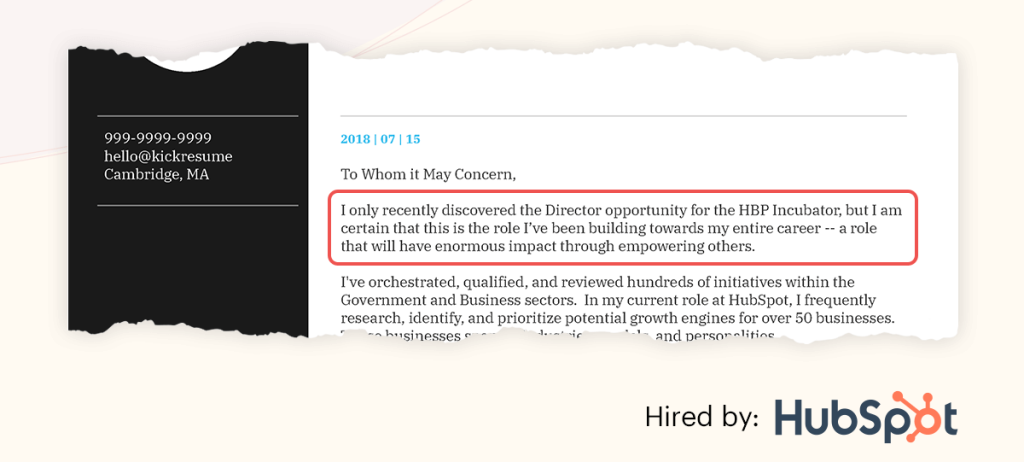
Account Executive Cover Letter Intro Sample
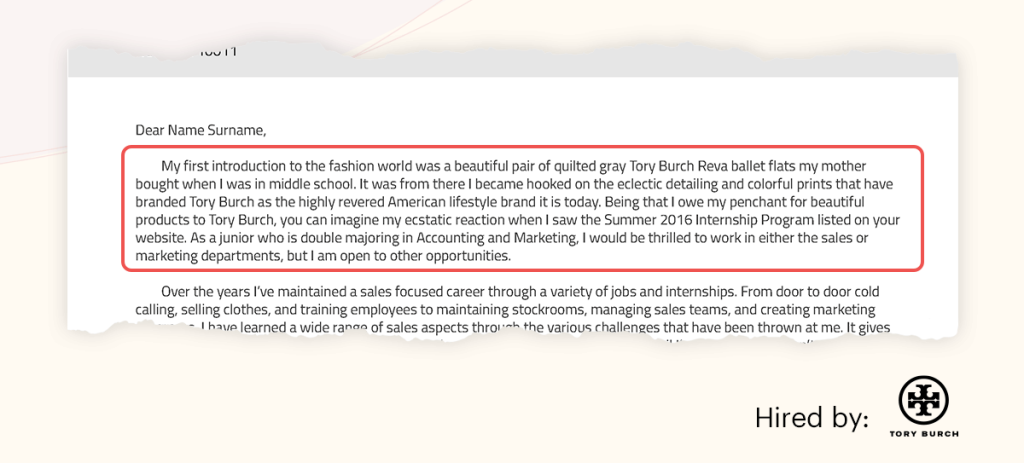
Sales Associate at LUSH Cover Letter Intro Example

Siemens SCADA Engineer Cover Letter Intro Template
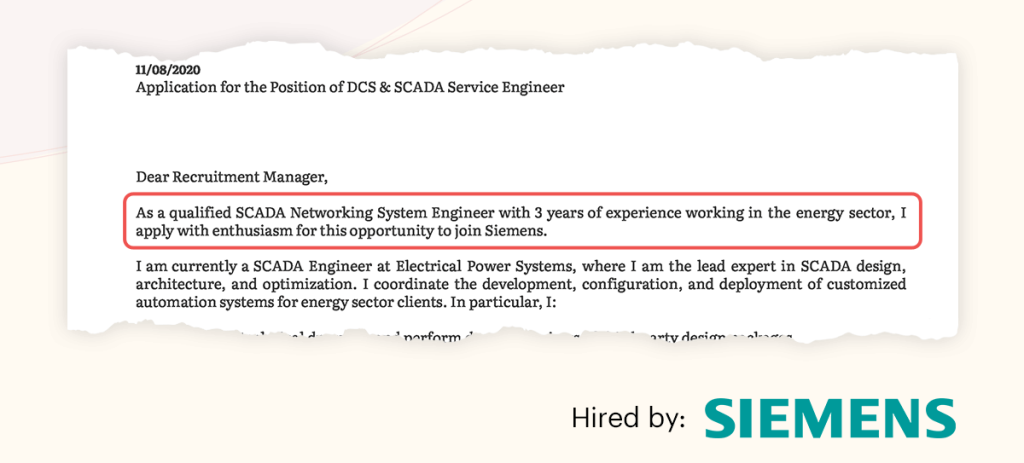
Warner Bros. Public Relations Intern Cover Letter Example
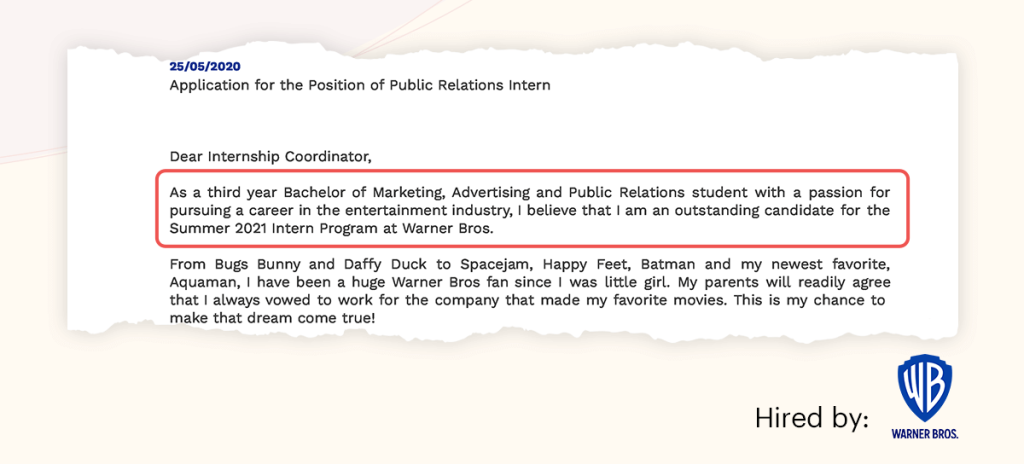
Do you want to know how to craft such a strong cover letter opening yourself? Follow a quick guide below.
And if you prefer to see more examples from hired professionals or find a job-specific cover letter example for your industry, visit our cover letter library .
Intro paragraph: a quick guide on how to start a cover letter
When it comes to cover letter openings, rule number one is that you should always start your cover letter in a way that grabs a recruiter’s attention from the get go.
On the other hand, be careful and stay professional. Don’t overdo it.
So the question is — when should you pick a standard opening paragraph and when to go with something more creative?
Well, it all depends on a particular job and the company culture .
Take time to research each company where you’re applying for a job and identify its tone of voice.
Are they formal or casual? Look at the job description, their website, and social media accounts and you’ll be able to get the right idea.
Then in your cover letter opening, follow at least one of these 7 main principles :
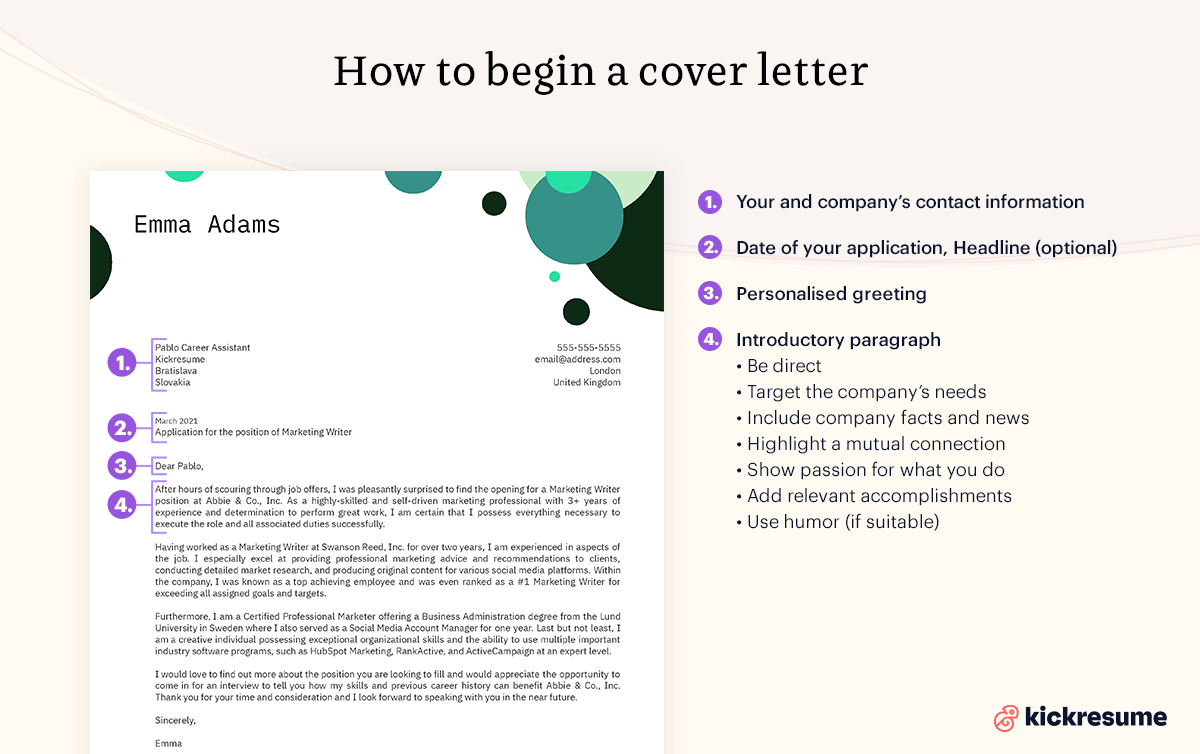
1. Be direct
Employers are busy people who usually don’t have time to read long texts or overused cover letter phrases . What they want to know is simply whether you’re a good fit. Why not make it easier for them and be specific from the very beginning?
Let them know what position you’re applying for and use your cover letter opening to highlight years of experience in your field and any relevant hard or soft skills you bring to the table.
It’s a universal, yet effective answer to how to start a cover letter.
Cover Letter Intro Example #1
I am very interested in the Sales Specialist opportunity at [Company XYZ] that was advertised on LinkedIn. I am a hard-working and dedicated individual with over two years of extensive industry experience, a Business & Management degree from McGill University, and a strong determination to meet and exceed all business goals and objectives.
2. Respond to the company’s needs
Employers want to know how you can contribute to their company. The first paragraph of the cover letter is a great place to demonstrate that.
Have a look at the job offer, go over the company’s needs, and pick those that you can easily relate to.
Then take a look at your achievements and impressive skills, and use them to illustrate how you can bring value to the new job. Ideally by mentioning any quantifiable results from your previous jobs.
Cover Letter Intro Example #2
Over the course of last year, I more than doubled [Company XYZ]’s Twitter followers and ran two successful Instagram ad campaigns that generated $35K+ in revenue. I’d love to bring my expertise in organically expanding the social reach and delivering ROI to the social media manager position at [Company XYZ].
3. Include company facts and news
Companies want to see that you’re interested in them and their industry. If you show that you already know about them and have done your research, you can make a great first impression.
Browse their website and scour the internet for related news articles. They can provide you with interesting facts that pertain to your role.
It can be anything — a specific event, fact, notable statistic, or an award that the company has recently received.
Cover Letter Intro Example #3
When I saw that [Company XYZ] was featured in Fortune Magazine last month for its commitment to renewable energy and reducing waste in the workplace, I was truly inspired. With my track record of reducing costs by over 30% and promoting sustainable technologies, I’m excited about the opportunity to take on the account executive role to expand your company’s growth and work towards a greener future.
4. Highlight a mutual connection
Referrals can work like magic when it comes to getting invited to a job interview . So if someone has recommended you for a position or you know anyone at the company who can vouch for you, mention their name right away.
After reading your cover letter, recruiters will most likely want to learn why your referrer thought you’d be a good fit. If nothing else, it will make recruiters pay attention to the rest of your cover letter.
Cover Letter Intro Example #4
I was excited to learn of this job opportunity from my former colleague, Lucy May. We’ve worked closely together for several years, most recently on a complex data analysis project at [Company XYZ]. She advised me to apply as she thought I’d be a good match for this position on your team.
5. Show passion for what you do
Employers love job candidates who are enthusiastic about what they do. These candidates tend to perform better and are more dedicated to their roles.
So if you’re all hyped up about your job, don’t hesitate to infuse your cover letter with a couple of sentences demonstrating your excitement about what you’re doing.
Cover Letter Intro Example #5
I knew I had a knack for writing ever since I was the main editor of our high school magazine. Thanks to my 15+ years of experience, I’ve transformed my passion into a fashion blog with 30K+ monthly readers, featured articles on Time and Cosmopolitan that have garnered over 50K views, and a writer’s workshop I founded for young up-and-coming writers.
6. Open with a relevant accomplishment
Hiring managers like achievers. If you’ve accomplished something noteworthy while with your previous employer, there’s a good chance you can bring the same value to your next job too.
What’s more, it shows that you’re an expert in your field.
If you have any special skills or accomplishments that will make you stand out from other job candidates, mention them right away in your cover letter opening.
However, try to make no general claims without providing evidence. Support your arguments with real numbers and statistics.
Cover Letter Intro Example #6
Over the past year as digital marketing manager at [Company XYZ], I’ve generated $50k+ in revenue, increased organic traffic to our blog by 18%, and almost tripled our social media ROI.
7. Use humor and creativity
Recruiters are human beings, too (shocking). In a pile of boring resumes and repetitive cover letters and motivation letters , they may find a good joke, juicy pun, or funny opening line a nice refreshing break.
It can even be a reason to call you up for an interview.
So if the company seems to have an easygoing vibe, use humor to bring attention to your skills or relevant personal traits that are needed for the position you’re targeting.
Cover Letter Intro Example #7
Before I flood you with all the reasons why I’m going to be your next writer, I would like to tell you a little about myself. I didn’t learn to hold a pencil until I was about six years old, which made everyone think I’d never pen a single letter. And now here I am, bidding to become your next Shakespeare.
Cover letter beginning: What other things to include?
Now that you saw some great examples of cover letter openings, you may wonder what else can you do to perfect your cover letter introduction.
Well, there are a few other key elements that a good cover letter beginning should include :
- contact information both for you and the company
- headline (optional)
- personalized greeting
To know where to put this information, just scroll down.
Find out your resume score!

This is the place for your and your company’s contact information.
Make sure that right at the top of the page you list your contact details such as:
- phone number
Optionally, you can also include:
- your professional title
- date of birth
- current date
- personal website/LinkedIn
Additionally, never forget to add company-related information . You should always include the manager’s recruiter’s name (if it was made available to you), job title department, the name of the company, and their address.
Left align all of this information. Or make it easy for yourself and choose a pre-designed cover letter template and only fill in the details.
Headline (optional)
You don’t have to include it, but it can help you grab the hiring manager’s attention.
In your cover letter headline, you can use numbers, questions, or interesting adjectives .
It can be something like “5 Ways I Can Help You Improve Your Company’s Marketing.”
Alternatively, you can just state the name of the position you’re applying for.

Salutation (or how to address a cover letter)
Try to avoid using “To Whom it May Concern” or “Dear Sir/Madam” . This form of address, while correct, has become so overused it won’t help you stand out at all.
Instead, try to research the hiring manager’s name online . Look at the job posting, and check the company’s website or LinkedIn . (Did you know that you can turn your LinkedIn profile into a great resume with just one click?)
Alternatively, you can address it to the whole team or HR.
Generally, stick to these rules:
- How to address a cover letter to a recruiter or hiring manager: The best practice is to use a personalized greeting in the following form: “Dear [first name]” or “Dear Mr./Mrs. [last name]” for formal companies.
- How to address a cover letter to multiple recipients: If you’re addressing your cover letter to the entire team or human resources, you can use “Dear [name of the company/department] Team” or “Dear Human Resources” .
- How to address a cover letter to an unknown person: If you fail to find the hiring manager’s name and don’t want to address your cover letter to an entire team or HR, use “Dear Hiring Manager” , or “Dear Recruitment Officer” .
After the salutations, you can continue with an attention-grabbing intro paragraph.
HR expert tip: Christy’s word of advice
“In general, a traditional formal cover letter is the safest bet. But there are times when you can totally throw that advice out the window and have a bit of fun putting your personality on paper! Take a look at how the company brands its ‘voice’ on its website and in the job description. Do they sound relaxed and personality-driven? Is formality anathema to them? If yes, don’t be afraid to reciprocate (while still keeping it professional). After all, you’re not just applying for a job: you’re applying to be part of the company’s culture”. — Christy Morgan, Resident HR Expert
Key takeaways: How to begin a cover letter
To sum up — the beginning of your cover letter will determine whether the hiring managers will read the rest of it or not.
If you want them to pay attention to what you have to say, make sure your cover letter opening:
- Uses a personalized greeting
- Says who you are
- Shows you’re passionate about the job or the company
- Highlights your top (and relevant) accomplishments and skills
- Mentions a mutual contact
- Reflects the company’s tone of voice
- Is tailored to a specific position and company’s needs
- Uses keywords from the job description
- Is short, nice, and direct
Of course, the rest of your cover letter is important too.
If you’d like to know what to write in the rest of your letter, check out our complete cover letter guide , get inspired by cover letter examples , or learn how to end a cover letter .
This article was recently updated. The original article was written by Nikoleta Žišková in 2021.

Kaja Jurčišinová
Kaja Jurcisinova is a fresh graduate and a junior copywriter at Kickresume. Kaja completed her undergraduate degree in Art History at the University of St Andrews in 2018 and graduated with a Master’s in Arts and Culture from the University of Groningen in 2021. She was an intern at multiple cultural institutions across Europe, including the Dutch Museum Association in Amsterdam, the Matter of Art Biennale in Prague, and the European Cultural Centre in Venice. At the moment, she resides in Visby on the Swedish island of Gotland.
Hungry for more?
How to write a professional resume summary [+examples], how to put your education on a resume [+examples], how to describe your work experience on a resume [+examples], let your resume do the work..
Join 5,000,000 job seekers worldwide and get hired faster with your best resume yet.

- Search Search Please fill out this field.
- Career Planning
- Finding a Job
- Cover Letters
How to Start a Cover Letter With Examples and Tips
:max_bytes(150000):strip_icc():format(webp)/ADHeadshot-Cropped-b80e40469d5b4852a68f94ad69d6e8bd.jpg)
- How to Start a Cover Letter
- Cover Letter Opening Sentence Examples
Personalize Your Cover Letter
- What to Write in the Rest of Your Letter
Cover Letter Sample
More cover letter examples and templates.
Theresa Chiechi / The Balance
What's the best way to start a cover letter for a job? The first couple of sentences of your cover letter are the most important ones. Recruiters and hiring managers often spend mere seconds scanning your application.
If your cover letter doesn't grab their attention right away, they may never even get as far as the second paragraph. What should these all-important first sentences say? Keep in mind that you're hoping to differentiate yourself from the competition. Your goal is to explain to the reader who you are, why you're writing, and how you can contribute to the employer's success.
Think about why the hiring manager should select you, above all other candidates, for an interview, and you'll be on the right track.
This might mean highlighting a contact , providing a quick window into your relevant background and experience, or emphasizing a significant accomplishment that would make you an asset to the organization.
How to Start a Cover Letter
Be direct. In these opening sentences, you want to explicitly let the reader know which position you're applying for. Hiring managers are often looking at candidates for several open jobs at any given time. Make sure it's easy for them to discover your intent. For example:
I am interested in the coordinator position at ABC company.
Mention a contact. If someone referred you to the position , include that information early on as well. Referrals are incredibly helpful in securing an interview, so be sure to mention yours right away. For example:
Jane Doe suggested I contact you about the job, as she feels my skills would be a good fit for the position.
State an accomplishment. Try to state an accomplishment from your previous job. If you can, show how you added value to the last company you worked for. You might even add the job title you had if it's similar to the one you are applying for. For example:
As coordinator at XYZ Enterprises, I have increased my group's output by 37% over the past 15 months.
Express excitement. Convey your passion for your work and excitement about the job and company. Your cover letter is an opportunity to sell yourself to the hiring manager and to share why you're well qualified for the job. For example:
I would greatly appreciate the opportunity to meet with you to discuss what I have to bring to the position at ABC company.
Use keywords. If you can include any keywords from the job listing, do so. You can mention a skill you have that was included in the post. For example:
My track history of successfully managing teams and delivering projects on time and on budget makes me a good fit for this role.
Examples of Cover Letter Opening Sentences
- As an information technology professional with high-level management experience in the IT industry, I learned that the best way to achieve success was to utilize the resources I had by employing well-defined objectives and an attitude of empowerment.
- I am very interested in the entry-level position that is available at ABC Investment Partners. I recently graduated from XYZ College, and my courses in investments, finance, and business have equipped me with a solid base upon which I plan to build my career.
- I am writing to express my strong interest in the international marketing position open at WellCam, Inc. My colleague Janna Doling recommended that I contact you directly about this position, owing to the years I have spent developing successful campaigns for XYZ company.
- I'm writing to express my interest in the editorial assistant position listed on Monster.com. Given my five years of editorial experience and excellent capabilities, I would appreciate your consideration for this position.
- I have a very strong interest in pursuing a teaching career. With experience working at both elementary and high school levels, as well as in activities outside of the traditional classroom, I have a diverse background with much to offer.
- I have the pleasure of being acquainted with one of the counselors on your staff, Eleanor Seville. She let me know about the open position and recommended that I contact you.
- I was excited to read about the administrative assistant job opening at XYZ company. I have several years of administrative experience in a variety of fields, including insurance and finance.
- I understand that you have been deluged with resumes since Computer World released its list of the best companies to work for. Mine is one more, but I do have experience that is hard to come by.
- My proven track record of successfully performing complex analyses on various corporations makes me an ideal candidate for the analyst opportunity that you have advertised.
When you're not sure how to get started, it can be really helpful to review examples of cover letters . You can use these as a guide, but be sure to tailor your introduction to your circumstances and the job you're applying for.
The more closely you construct your cover letter to show that you're a match for the job requirements , the better your chances of getting selected for an interview.
What to Write in the Rest of Your Cover Letter
Of course, the rest of your letter is important too. You'll need to use an appropriate salutation and make your cover letter closing polite and inviting. In the body of your letter , you have the opportunity to pitch your qualifications for the job in more detail than you have room for in your resume.
If there are specific events or accomplishments you feel are likely to make you stand out, you can briefly mention them and explain in more detail should you secure an interview.
Make sure your contact information is complete as well, and format your signature to match the letter style you are using.
Download the cover letter template (compatible with Google Docs or Word Online), or read the example below.
Sample Cover Letter (Text Version)
John Smith 37 Oak Street Middle Village, New York 10502 555-555-555 john.smith@email.com
March 22, 2024
Dr. Jane Doe All Smiles Dentistry 5 Main Street, Suite A Middle Village, New York 10502
Dear Dr. Doe,
My former coworker, Maria Rodriguez, suggested that I contact you to express my interest in the position of dental assistant in your office in Middle Village.
I’m a licensed dental assistant with over 10 years of experience helping dentists and hygienists make their patients smile. In my current role with ABC Dental, I have gained proficiency in the four-handed dentistry technique, as well as mastering Henry Schein Dentix software.
I also have the following skills and qualifications, as outlined in the job description on your website:
- Experience taking and developing dental X-rays
- Infection control expertise, including preparing and sterilizing instruments and equipment
- Knowledge of several different types of scheduling software
- Language skills (bilingual: English/Spanish)
- Excellent customer service skills and attention to detail
Most importantly, I love people. I consider it a great privilege to help dentists improve their patients’ lives by providing the very best support and customer care.
I’ve enclosed my resume, and I hope you’ll contact me at your convenience to arrange an interview.
Signature (hard copy letter)
Review cover letter examples for many different types of jobs, and get downloadable templates you can use to write your own cover letters.
CareerOneStop. " How Do I Write a Cover Letter ."
Cover Letters
Crafting a great cover letter can set your application apart and help you get your foot in the door. But where to start? We've got tips, templates, and examples to get you going—from great opening lines to real samples that actually worked.
Featured Articles

by Regina Borsellino
How to format a cover letter that’ll get you an interview.

Your Quick Guide to Cover Letter Headings

by Alyse Maguire
4 cover letter examples (plus tips on how to write yours), recently published.

by Amanda Cardoso
How to write a cover letter with no experience (examples included).

How to Close a Cover Letter in 2024 (With Tips and Examples)

What’s a Letter of Interest and How’s It Different From a Cover Letter?

125+ Words to Describe Yourself in a Job Interview, Resume, and More

What’s the Ideal Length for a Cover Letter? —Plus Tips to Get Yours There

by The Muse Editors
How to start a cover letter: 30 creative opening sentences recruiters will love.

by Lily Zhang
Here are 15 possible reasons you’re not getting hired—and how to fix them.

by Stav Ziv
The top jobs, remote roles, industries, and cities for entry-level candidates in 2021.

by Erica Sweeney
6 tips to stand out and land a new job during the “great resignation” (because you’re not the only one looking).

The (Simple) Guidelines You Should Follow When Naming Your Resume and Cover Letter Files

No, Analytical Skills Aren’t Just for Analysts—Here’s How to Show Yours Off in a Job Search

by Kate Ashford
8 essential tasks to jump start your 2021 job search.

5 Reasons You Should Write a Cover Letter—Even When the Job Description Says It’s Optional

by Jaclyn Westlake
7 ways job searching will be different in 2021 (and how you can adapt).

Finally, an Answer To: Are Cover Letters Still Necessary?

The Ultimate Guide to Soft Skills in the Workplace and Your Job Search

by Heather Krasna
The best ways to talk about your covid-19 layoff in a resume, cover letter, or interview (with examples).

Hard Skills vs. Soft Skills: What the Heck Is the Difference?

by Meredith Pepin
Dear recent college grads, here's how to write a great cover letter.
- Preparation Tips
- Interview Checklist
- Questions&Answers
- Difficult Questions
- Questions to Ask
Interview Tips
- Dress for Success
- Job Interview Advice
- Behavioral Interview
- Entry Level Interview
- Information Interview
- Panel Interviews
- Group Interviews
- Phone Interviews
- Skype Interviews
- Second Interviews
- Zoom Interviews
- Job Interview Guides
- Administrative
- Call Center
- Clerical Interview
- Customer Service
- Human Resources
- Office Manager
- Project Manager
- Restaurant Jobs
- Social Work
- Interview Follow Up
- Thank You Letters
- Job References
- Employment Tests
- Background Checks
- Character References
- Accepting a Job Offer
- Decline a Job Offer
- Verbal Job Offer
- Negotiate Salary
- How to Resign
- Job Search Strategy
- Job Search Tips
- Respond to Interview Request
- Letters of Recommendation
- Surviving a Layoff
- Sample Resumes
- Resume Objectives
Cover Letters
Job Descriptions
- Job Interview Blog
- Best Articles
Privacy Policy
- Cover Letter Intro
How to Write an Effective Cover Letter Intro
Your cover letter intro is your first opportunity to grab the reader's attention and generate serious interest in your job application.
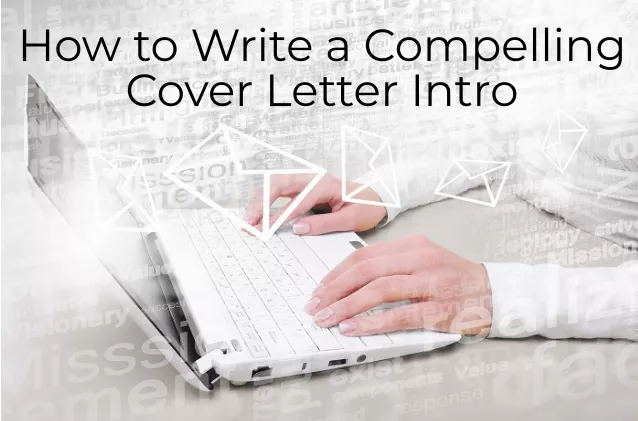
We show you how to start a cover letter by introducing yourself with conviction while shining a spotlight on the qualifications that make you an excellent fit for the job opportunity.
There are a number of ways to do this, we walk you through the process of developing a great introduction to your cover letter and provide effective examples of how to begin your cover letter.
5 key steps to write a good cover letter intro
1. Address the letter to someone by name
Get your cover letter off to the right start by ensuring your letter is addressed to an individual. Contact the company to get the full name, correct spelling and title of the person responsible for reviewing your resume.
Addressing your cover letter to "The Hiring Manager" or "To Whom it May Concern" immediately creates a disconnect between you and the reader.
2. Specify the job you are applying for
The hiring manager may be screening candidates for a number of different job openings so it is important to be explicit about the job you are applying for in your cover letter introduction.
3. Convey enthusiasm for the job
Show commitment from the word go by briefly articulating why you are excited about the job opportunity.
4. Highlight your suitability
Find out as much as you can about the job and company before writing your cover letter. You can then concisely introduce yourself as a well qualified candidate before going on to specify your relevant skills and experience in the body of your cover letter.
5. Tailor your cover letter intro for each job
Your introduction should be targeted to the specific job opportunity and company.
Good examples of how to introduce yourself in a cover letter
Specify the job opportunity and show your enthusiasm
Your online job posting regarding the ..... position immediately caught my eye and your company name caught my attention
Your recent job posting for the ..... position has captured my serious interest
I read your job description for the .... position with great enthusiasm
I was excited to read your ..... job posting
I was very pleased to learn of your need for a .....
Introduce yourself with conviction
I believe that I am particularly well qualified for this position, please allow me to highlight my skills as they relate to your requirements...
I believe that my qualifications and experience, as presented below, combine to create an excellent match for the position...
I am convinced that I have the skills and expertise to successfully fulfill your job needs...
The enclosed resume details my proven track record in a similar position, some key points you may find relevant include:
My previous work experience has equipped me with the skills and knowledge you are looking for, in particular ....
This position will utilize my extensive experience in ....
I am confident that I will make an immediate and valuable contribution to your company, my credentials for this job include:
As a results-driven professional I believe I am well suited to this job, highlights of my achievements include the following :
5 cover letter intro examples that get the results you want
Here are 5 effective ways to start your cover letter when you are submitting a job application..
1. Introduce yourself in a professional manner
Let the employer know you are a serious and well qualified candidate for the job by introducing yourself in a direct and straightforward way.
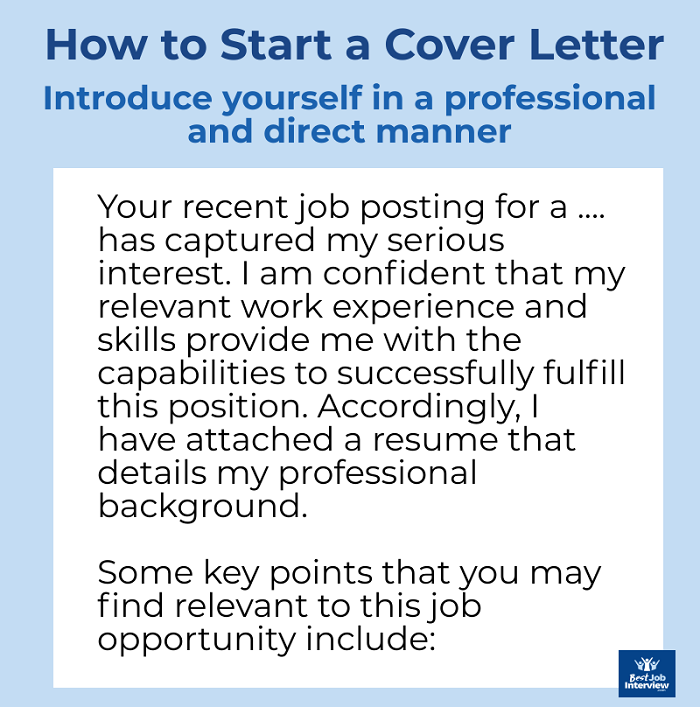
2. Introduce yourself with enthusiasm and conviction
Emphasize your genuine interest in the position and the company and state your confidence that you are an excellent candidate for the job.
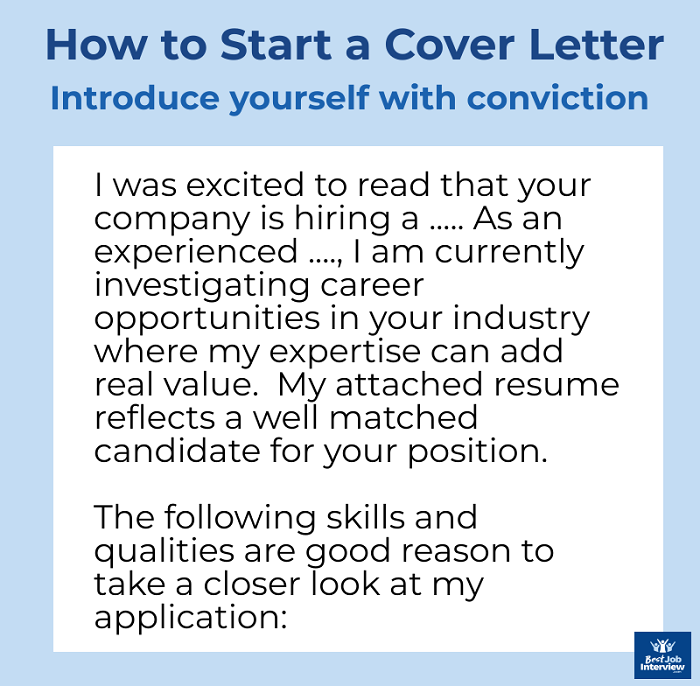
3. Focus on your suitability for the job opportunity
Why are you a good match for the job? Let the company know what you can offer them in this position.
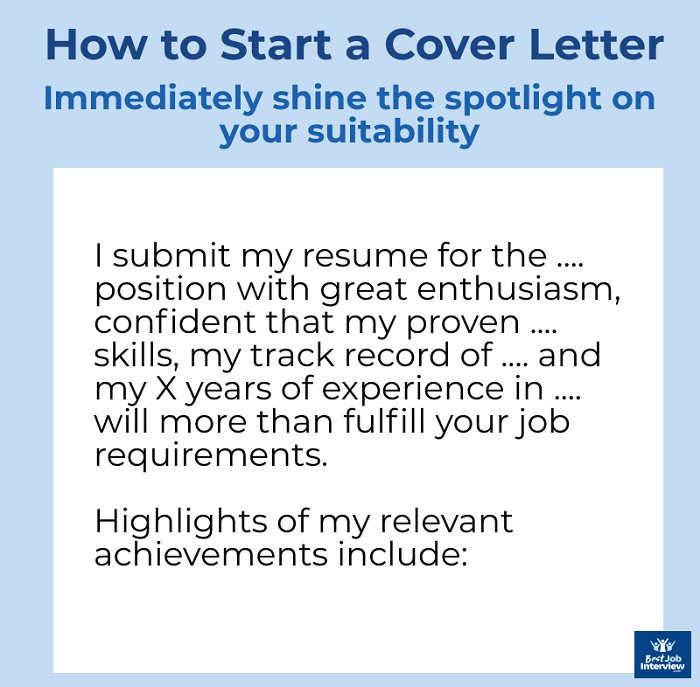
4. Articulate your passion for the job
Employers seek individuals who show genuine passion for the work they are doing. Combined with the right skills, passion is a top driver of success in a job.
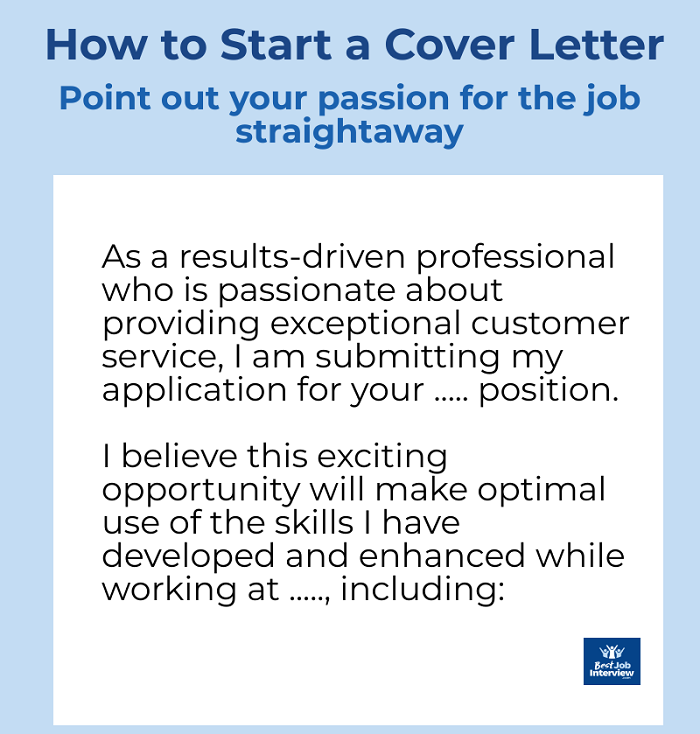
5. What makes you the best candidate for the job?
Use your cover letter intro to differentiate yourself from the competition. Start with a relevant and impressive accomplishment or skill that puts you ahead of the pack.
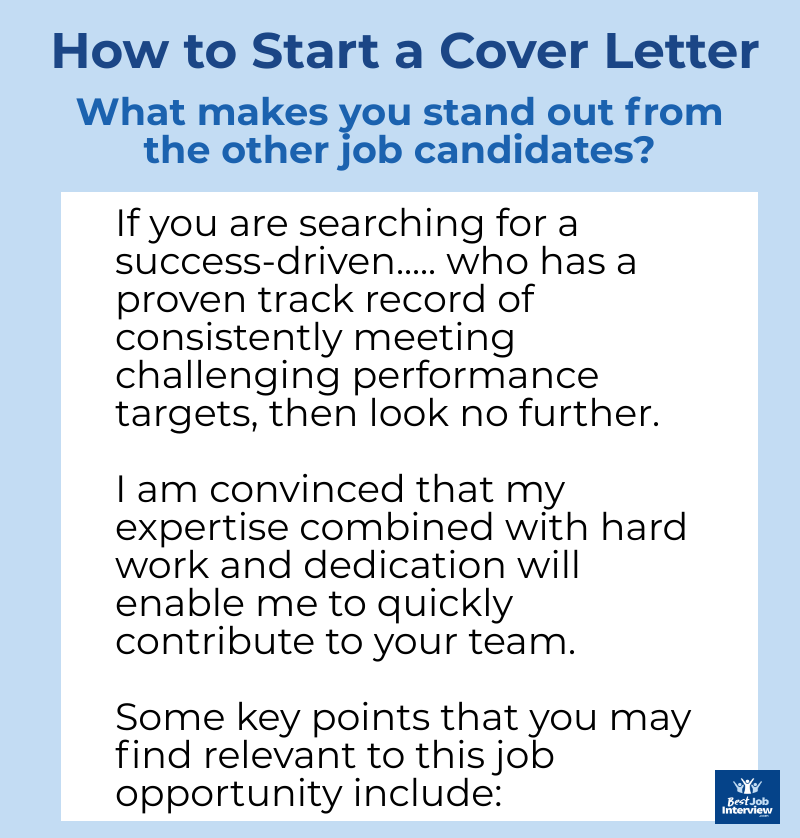
Once you have grabbed the reader's attention with a powerful cover letter intro, the next step is to maintain interest and create the desire to learn more about you.
This is achieved in the body of your cover letter which brings attention to the skills, knowledge, expertise, achievements, qualifications and experience that make you a successful candidate for this specific position. It is a concise and compelling summary of what makes you the right job candidate.
You can use the structure of this cover letter template to help you with this next step.
In addition we have over 50 sample cover letters for different jobs that you can easily adapt for your own use.
Closing your cover letter
How you close your cover letter is as important as how you start it.
It is essential to end with the right message and ensure the reader takes action and continues on to read your resume with serious interest.
Find out how to close a cover letter strongly with good examples.
Everything you need to write a powerful cover letter
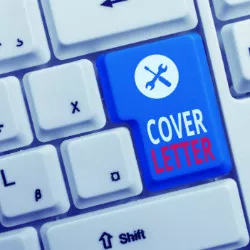
COVER LETTERS
Over 50 Sample Cover Letters
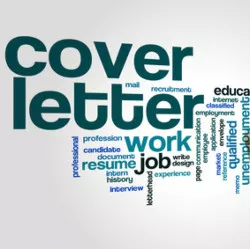
4 Cover Letter Formats

Sample Email Cover Letter
Gain a good understanding of the job requirements
In order to write an effective cover letter intro it is essential that you have a clear understanding of the job opportunity. Use these complete job descriptions to help you with this.
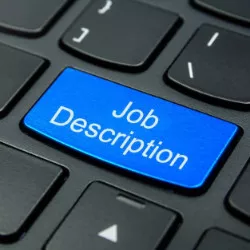
List of Strengths
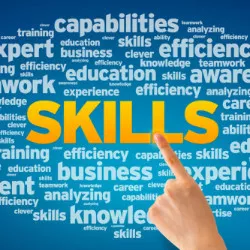
Job Skills List
Submit a job-winning resume
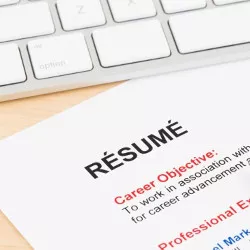
SAMPLE RESUMES
Over 50 Sample Resumes
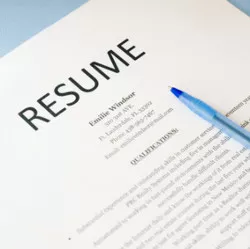
Sample Resume Template
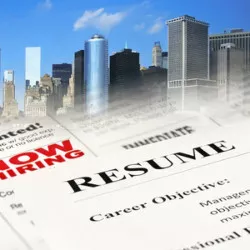
Top Resume Writing Tips
Don't Miss These Latest Updates
Problem-solving is a key skill for today's workplace. Problem-solving behavioral interview questions
Compelling sample interview answers to "Why do you want to work for this company?"
11 essential supervisor interview questions and answers plus industry specific supervisor Q&A .
How to ask for a letter of recommendation with this sample email requesting letter of recommendation .
What are the top 10 reasons for leaving your job? Find out acceptable reasons for leaving a job.
Sample employment acceptance letter and email to properly confirm your acceptance of the job offer and employment contract.
What are your strengths? Find out the 11 essential workplace strengths at list of strengths and weaknesses
Interview Preparation
Interview Questions & Answers
Interview Guides
After the Interview
The Job Offer
Latest News
© Copyright 2023 | Best-Job-Interview.com | All Rights Reserved.
- See All Courses >
- SUCCESS STORIES
- GET YOUR FREE LINKEDIN HEADLINE SCORE >>
- GET YOUR FREE RESUME SCORE >>
- GENERATE YOUR JOB-WINNING COVER LETTER >>
- FIND ANY CONTACT’S EMAIL ADDRESS >>
- ResyMatch.io Scan and score your resume vs. any target job.
- ResyBuild.io Build a job-winning resume using proven templates and advice.
- CoverBuild.io Have AI generate a personalized, job-winning cover letter in
- HeadlineAnalyzer.io Transform your LinkedIn headline into a job-generating machine.
- ResyBullet.io Scan, score, and upgrade your resume bullets.
- Mailscoop.io Find anyone’s professional email address in seconds.
- The Job Search Email Playbook Our 100+ page guide to writing job-winning emails.
- Value Validation Project Starter Kit Everything you need to create a job-winning VVP.
- No Experience, No Problem Learn how to change careers with no experience.
- The Interview Preparation System A proven system for job-winning interview prep.
- The LinkedIn Launch Formula A proven system for six-figure success on LinkedIn.
- See All Blog Posts Check out all of our job search articles & posts.
- HeadlineAnalyzer.io Scan your LinkedIn Headline and turn it into a job-generating machine.
- LinkedIn Profile Optimization Our comprehensive guide to optimizing your LinkedIn profile.
- LinkedIn Headlines Learn how to write a crazy-effective LinkedIn headline.
- LinkedIn Profile Picture Learn how to create a job-winning LinkedIn profile picture.
- LinkedIn About Section Write a job-winning About section (with examples!)
- LinkedIn Cover Photos Learn how to create a job-winning LinkedIn cover photo.
- GET YOUR FREE LINKEDIN HEADLINE SCORE >>
- ResyMatch.io Scan your resume and turn it into a job-generating machine.
- ResyBuild.io Build a beautiful, job-winning resume using recruiter-approved templates.
- Resume Examples Check out example resumes for a range of job titles and industries.
- How To Write A Resume Learn how to write a resume that actually wins job offers.
- Resume Summaries Our guide on writing a job-winning resume summary.
- Resume Tips & Action Words 175+ tips & examples to supercharge your resume.
- GET YOUR FREE RESUME SCORE >>
- CoverBuild.io Use our tool to generate a personalized, job-winning cover letter in
- Cover Letter Examples Check out example cover letters for a range of job titles and industries.
- How To Write A Cover Letter Learn how to write a cover letter that actually wins job offers.
- Cover Letter Templates Check out our proven, job-winning cover letter templates.
- Addressing A Cover Letter Learn how to start a cover letter the right way.
- GENERATE YOUR JOB-WINNING COVER LETTER >>
- Mailscoop.io A tool to help you find anyone’s professional email in seconds.
- How To Get A Job Without Applying Online Our flagship guide for effective job searching in today’s market.
- How To Network Our comprehensive guide on learning how to network.
- Tips For Better Networking Emails 6 tips for writing networking emails that actually get results.
- What To Ask In An Informational Interview 10 great questions to ask during a networking conversation.
- FIND ANY CONTACT’S EMAIL ADDRESS >>
- How To Prepare For Interviews Our proven preparation framework for turning more interviews into offers.
- How To Create A Job-Winning Interview Presentation Learn our “silver bullet” Value Validation Project presentation strategy.
- Interview Questions & Answer Examples Job-winning example answers for common interview questions.
- What To Wear To An Interview A simple guide to dressing for the job you want.
- How To Write A Job-Winning Thank You Note Learn how to write a post-interview thank you that wins job offers.
How To Start A Job-Winning Cover Letter (7+ Examples)

- LinkedIn 16
- Pinterest 18
Your cover letter opening can make or break your chances of scoring the interview.
Problem is, most job seekers don't really understand what hiring managers are looking for when they start reading a cover letter!
That costs them job interviews that they probably would have won if they'd written their cover letter opening the right way.
That's where this article comes in!
As a job seeker, I wrote hundreds of cover letters. I A/B tested virtually every aspect of those letters to see what worked and what didn't. I doubled down on the successful strategies and wound up scoring interviews and offers from places like Google, Microsoft, & Twitter.
As a career coach, I've worked with thousands of job seekers on thousands of cover letters. These people came from all sorts of backgrounds, levels of experience, and geographies. Through them, I was able to gather more data on my cover letter strategies to refine them.
In this post, I'm going to share the exact strategies that have worked for me and my clients (and I'm going to show you why most conventional cover letter advice doesn't work anymore!).
We'll be covering:
- What exactly a “Cover Letter Opening” is and why its important
- The two mistakes 99% of people make when starting their cover letter
- The 3 parts of a highly effective cover letter opening
- 3 examples of cover letter openings for different roles and industries
By the end of this post, you'll know exactly how to write a job-winning cover letter opening that stands out from the crowd and gets you hired.
What Exactly Is A “Cover Letter Opening?”
We can break down pretty much every cover letter into a few distinct parts.
Most cover letters including a Heading, Greeting, Intro, Body, and Closing. Here's a visual example of each of those woven into a fully formed cover letter:
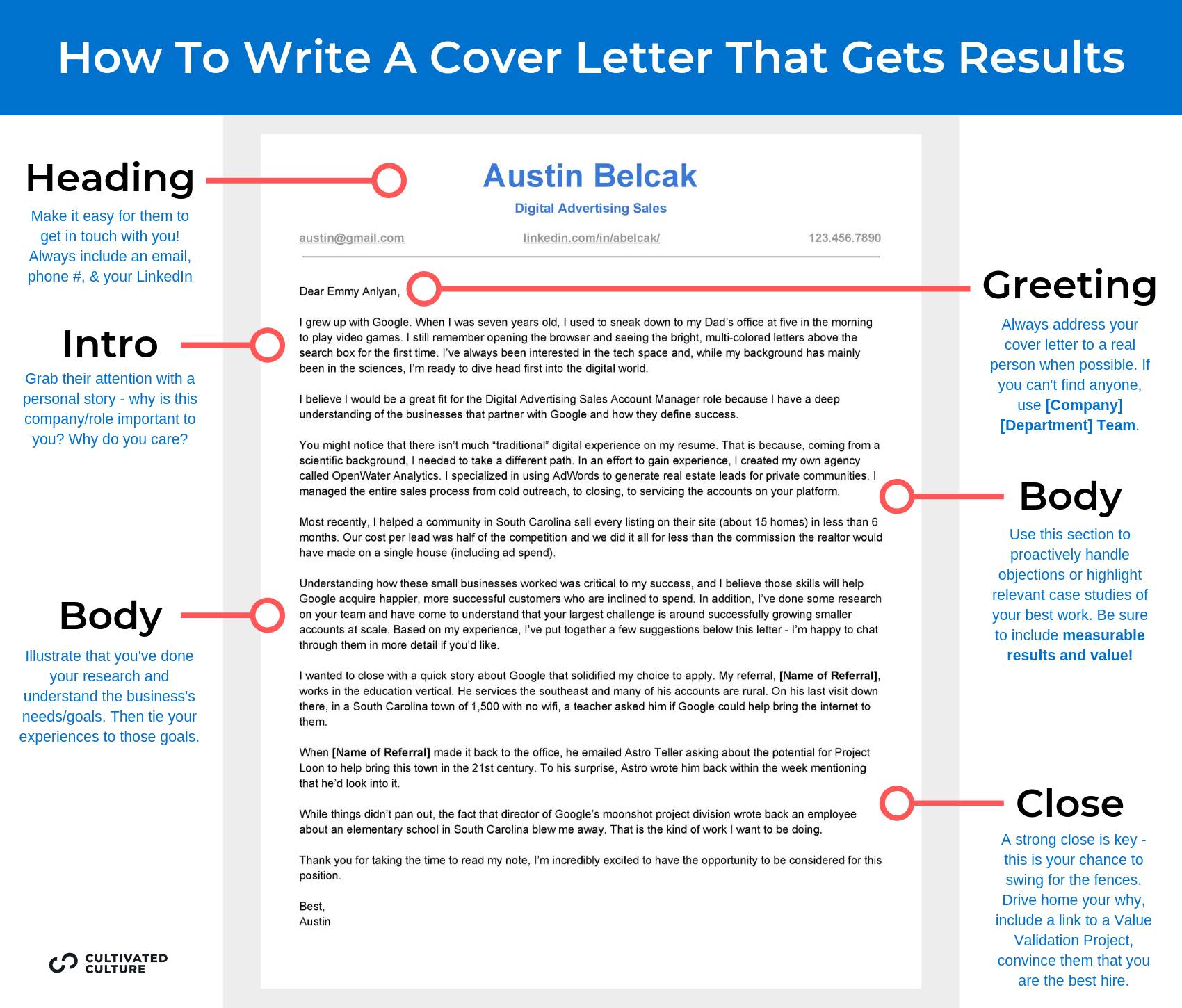
The “Cover Letter Opening” is made up of the first three parts – the Heading, Greeting, and Intro .
These are the first sections that recruiters and hiring managers will be reading, so we need to make a strong first impression if we want to land the job. That's what this post will be focused on.
If you're a fan of learning via video, I recorded this overview of everything we're going to cover in this article (mistakes, strategies, and examples). Check it out and then read on for a step-by-step breakdown of the process we're going to use to help you start your job-winning cover letter:
The Two Mistakes That 99% Of People Make When Starting Their Cover Letter
Before we dive into the right approach to starting your cover letter, I want to talk about two mistakes I see in the vast majority of cover letter openings so you can avoid them.
When it comes to hiring, companies only care about one thing:
Finding the person who will bring the most value and ROI to the role.
As candidates, it's our job to position ourselves as that person. We do that by showing the hiring team that we understand the company, the team, and the needs, goals, and challenges for this specific role.
It all starts with relevance!
Problem is, most job seekers do the exact opposite.
Instead of investing time into personalizing the opening to their cover letter, they take a generic approach that they saw in some random blog post or template.
This leads to two major mistakes that cost people interviews and job offers:
Mistake #1: Not Being Specific With Your Greeting
If our goal is to show the reader that we know them and we understand their needs, starting our cover letter with “Dear Hiring Manager” or “To Whom It May Concern” is just about the worst we can do.

Neither of those greetings inspire any excitement nor do they convey any sense of expertise and knowledge around this role.
But so many candidates do this! In fact, the majority of cover letters that have come across my desk as a career coach and when I was interviewing candidates for our team at Microsoft had this greeting.
We need to do better if we want to stand out (I'll show you how in a sec!).
Mistake #2: Making It All About You
The second mistake most people make is using the opening lines of their cover letter to speak about themselves.

Conventional advice has told job seekers to use this space to talk about their experience, the titles they've held, and the excitement they have for this opportunity.
Problem is, that conventional advice simply doesn't work.
Because the company doesn't really care about you. They care about whether or not you're the person who will bring the most value and ROI to the role, remember?
When you talk about yourself and your background, you don't illustrate that you understand the company's needs, challenges, or goals.
You're also competing with all of the other candidates who are only talking about their backgrounds, which means the only thing you have to compete on is, well, your background!
When you're applying for roles at highly sought after companies, there's going to be a lot of competition and chances are good that someone else vying for this role has better “on paper” experience.
If we want to stand out and win more interviews, we need to show the reader that we understand the specific goals, challenges, and needs for this role.
So how do we avoid both of these mistakes and craft a job-winning cover letter opening?
The 3 Parts Of A Highly Effective Cover Letter Opening
I've spent a total of 7 years writing hundreds and hundreds of cover letters.
The first two years were in my own job search, where I applied to over 500 jobs and eventually landed interviews and offers from Google, Microsoft, and Twitter. The last five have been focused on coaching thousands of job seekers spanning the full range of experience, industries, and geographies.
From the results gathered from literally thousands of cover letters, I've found this 3-part cover letter opening to be the most effective when it comes to landing interviews and job offers.
Part #1: Personalize Your Cover Letter Greeting
To avoid Mistake #1 (covered above), we want to personalize our cover letter greeting.
This simply means that we want to make the cover letter as relevant to the person reading it as we possibly can. There are two ways to do this:
1. Use The Hiring Manager's Name
The first, and best, is by including the hiring manager's name. Let's say that you discovered the hiring manager's name from a post on LinkedIn or via an informational interview.
This is the jackpot! All you need to do is use their name in the introduction, like this:

Use This Formula: To The [Department] Team at [Company]
If you don't have the hiring manager's name, no problem! You can address your cover letter to the team that you're applying to.
For example, if you're applying to for a Product Marketing Manager role at Discovery Education, you might start you cover letter like this:
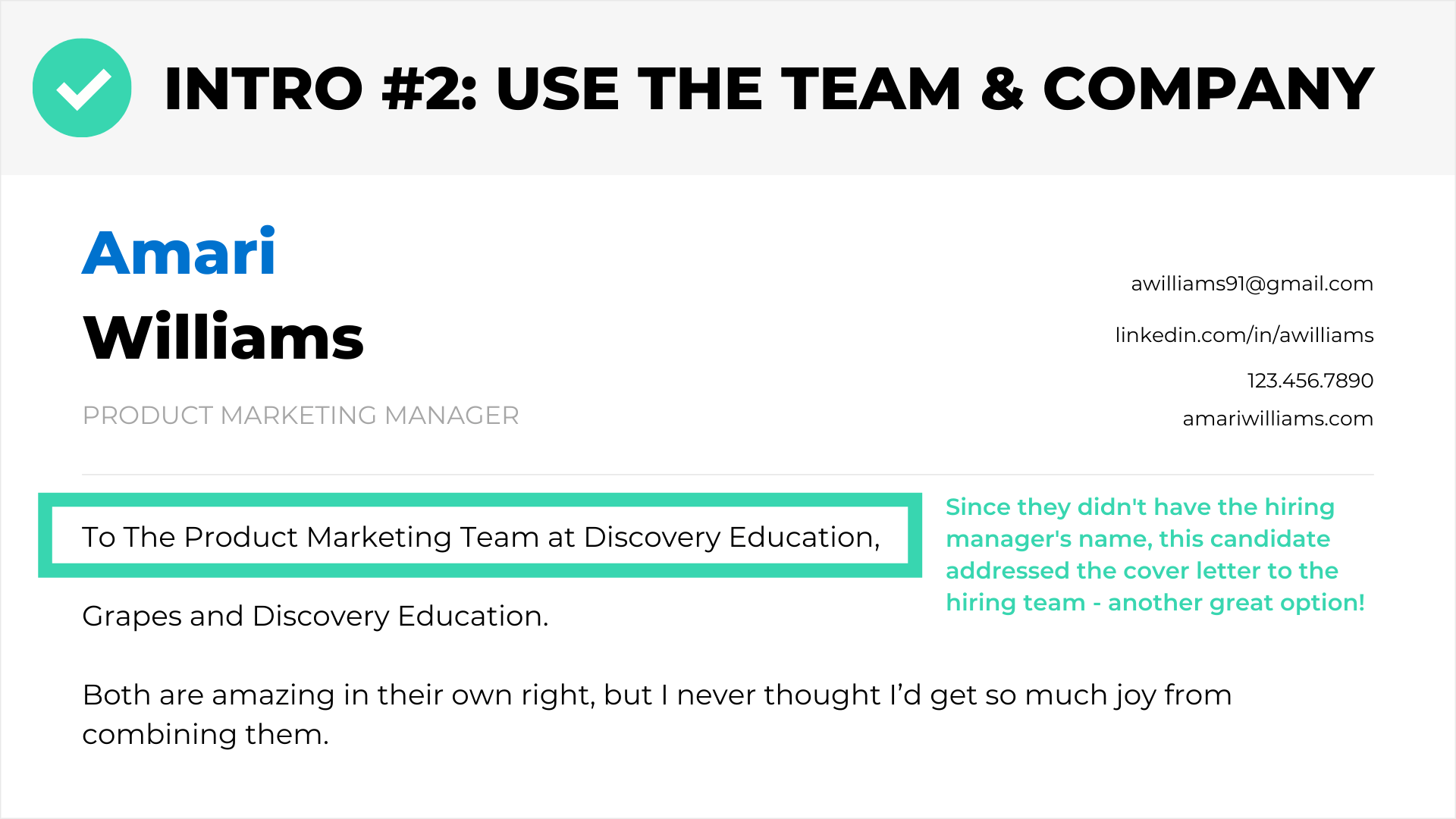
This shows the reader that this letter has been written specifically for them and the content inside of it will support that.
It's much more relevant and personal than “To Whom It May Concern!”
Part #2: Start Your Cover Letter With An Attention Grabbing “Hook”
Here's some tough love:
If you're doing the same thing as everybody else, you can't expect better results than everyone else.
I see way too many job seekers heading to Google, searching for “Cover Letter Template,” and then just playing Mad Libs to slot in their experience.
The problem with that?
Your cover letter is going to look just like everyone else's!
When recruiters are on their tenth cover letter that starts with, “I'm incredibly excited for the opportunity to apply for the Account Manager position at [Company]…,” their eyes start to roll back into their head.
The key to writing a job-winning cover letter is to immediately grab the reader's attention and suck them into your story.
In fact, there's research showing that humans (like your recruiter) are more likely to remember you and connect with your experience when you share that information with them in the form of a story:

When starting your cover letter, you should have one goal: to use each sentence to convince the reader that they have to read the next sentence.
Let's take a look at a real example from a client of mine.
She was a high school Spanish teacher hoping to land a job in marketing at a company called Discovery Education.
Instead of using the same old introduction, she decided to tell a story about how Discovery Education's products had helped her as a teacher. Here's what she wrote:
Dear [Hiring Manager] , Grapes and Discovery Education. Both are amazing in their own right, but I never thought I’d get so much joy from combining them. I currently teach high school Spanish and I set aside time each class to teach my students about Spanish culture. A few weeks ago, we watched the “Virtual Viewing Party: Holidays from Around The World” video by Discovery Education. My students particularly loved the segment on the Spanish New Year’s 12 grapes tradition. This got my students interested in other aspects of Spanish culture. Now, we’re working on a culture project where students research a Spanish tradition and create a 3D representation of it. I’ve never seen so much energy in my classroom. Amazing stories like these are why I want to work for Discovery Education.
Now find me a hiring manager that isn't going to read that very first line and have to read more!
My client included something seemingly irrelevant (grapes) to grab the reader's attention. Then she masterfully turned that hook into a story that showed she was familiar with the company, its products, and its mission.
That's how it's done!
Part #3: Close The Start of Your Cover Letter With A Performance-Based Value Proposition Statement
Now that you've personalized your greeting and hooked your reader, it's time to illustrate your value.
You should close your cover letter opening with a value proposition statement that covers three things:
- It shows that you understand the needs and goals for the role
- It provides supporting evidence from your past (using measurable results)
- It ties your results directly to the goals of the role
The goal of your value proposition statement is to show the reader that you understand their needs and you have experience driving similar results in the past. Here is the formula you want to use:
The Value Proposition Statement Formula I believe that the X+ years of experience I have [Insert Results That Align With Goals] for companies like [Insert Companies / Clients] makes me an ideal fit to help [Company Name] achieve their goals for this role.
Here are a few examples of that formula in action:
Example #1: Value Proposition Statement for User Experience Designer
Let's say you're applying for a User Experience Design role at a hospitality-focused tech startup that's hoping to improve their website conversion rates. Your value proposition statement might be:
I believe the 6+ years of experience I have boosting site conversion rates for clients like AirBnB, Verbo, and Hotels.com make me a strong candidate to help [Company] achieve their goals for this role.
Example #2: Value Proposition Statement for Partnerships Manager
In this case, you're applying for a Partnerships role at a disruptive direct-to-consumer company whose goal is to drive more product sales through partnerships. Your value proposition might be:
I believe the 4+ years of experience I have creating partnerships that have driven $10M+ in ARR for brands like Harry's Razors and Warby Parker make me an ideal fit for this role.
3 Examples Of Job-Winning Cover Letter Openings
Awesome! I hope you feel like you have a solid grasp on the three parts that make for a job-winning cover letter opening.
Now let's check out some examples to see how these concepts apply to different roles and industries.
Example #1: User Experience Design in eCommerce
In this cover letter opening example, we have Jasmin who is applying for a User Experience Design role at FitWorld, a fitness-focused eCommerce company.
The company's main goal is to improve their customer's support experience (making it easier for their customers to get the help they need, while reducing the amount of hours support spends manually handling issues):

Example #2: Sales in Technology
This cover letter opening example focuses on Chris, who is vying for an Enterprise Account Executive role at Expand.ly a SaaS company in the tech space. The company's latest initiative is expanding into the enterprise sector and they're looking for a salesperson with a track record of enterprise sales success:
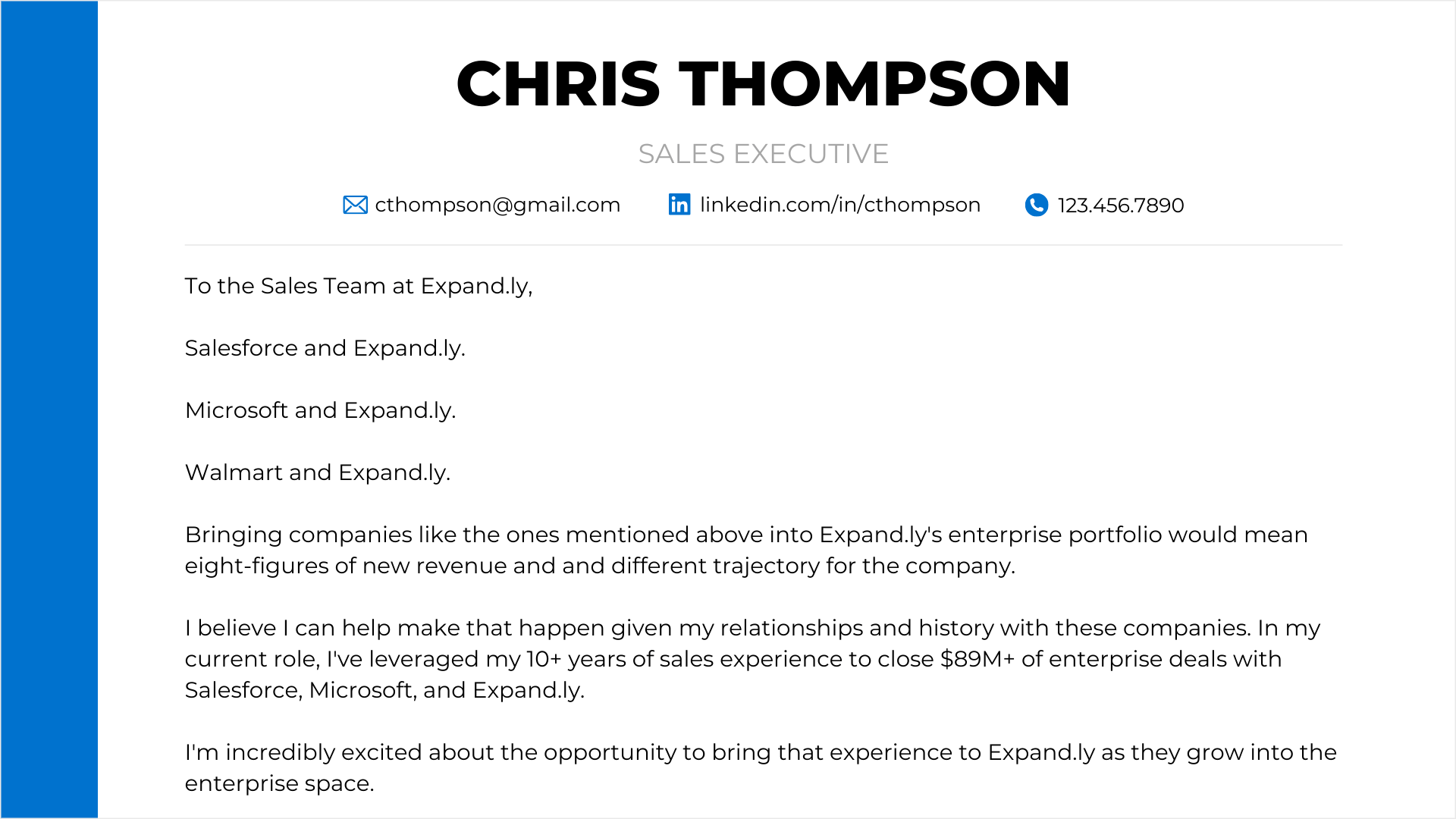
Example #3: Software Engineer in Healthcare Technology
This cover letter opening example is about Tameka, a software engineer eyeing up a role at a healthcare technology company called Wellify.
The health tech company is looking to build integrations with major healthcare systems and wants someone who has experience working in real healthcare settings:
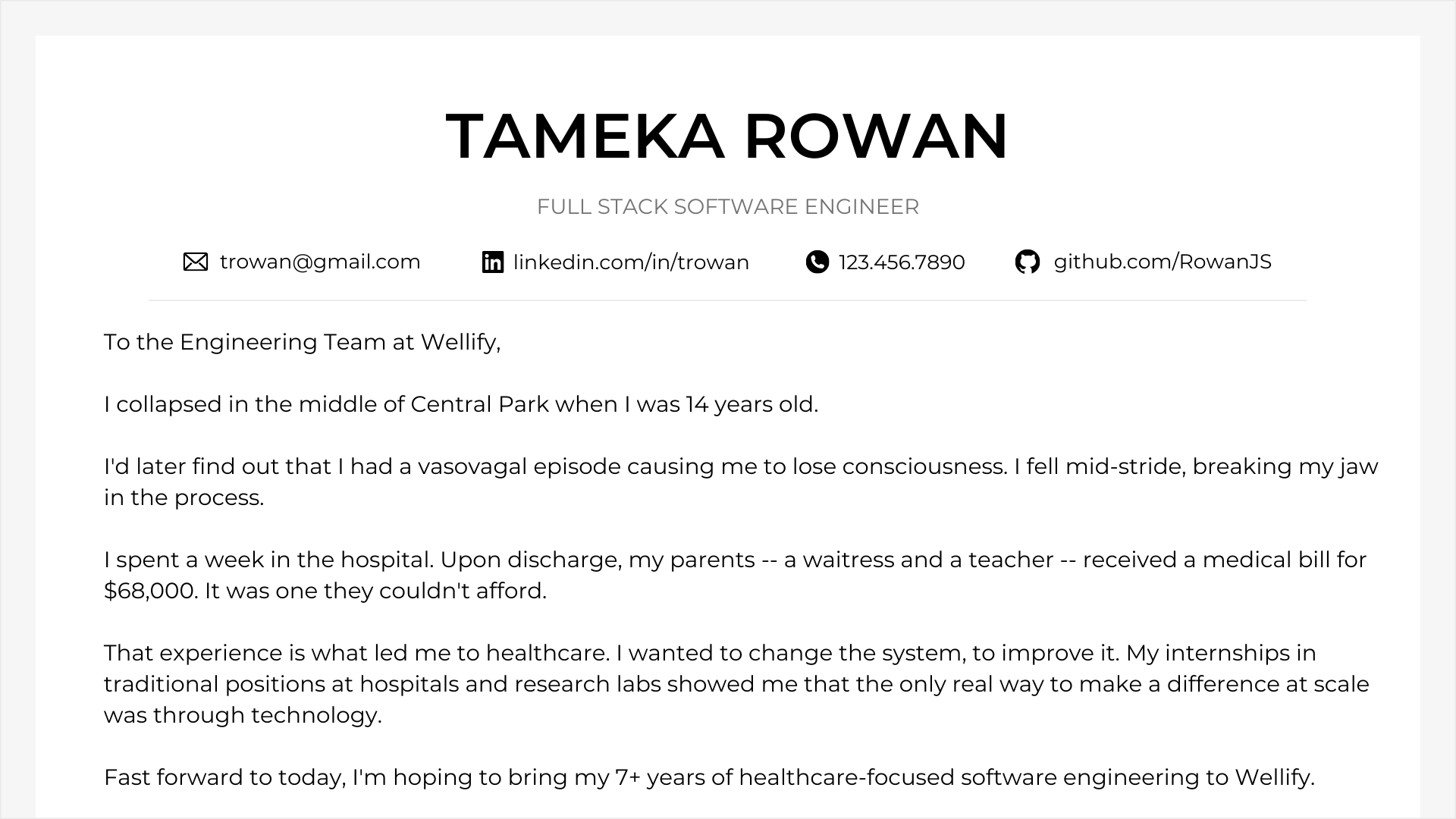
Key Takeaways: Cover Letter Openings
You made it! I hope this article helped you rethink how you're going to write your cover letter.
Remember, you want to make sure to avoid robotic, templatized greetings and intros. Instead, you want to address your cover letter to the hiring manager or to the specific team at the company you're applying for.
Then you want to hook your reader with a story. Your goal for each line in the opening of your cover letter is to get the reader to feel like they absolutely have to read the next line.
Finally, you want to tie your experience into the goals for the company and the role!
If you do that, you're going to have the start of a job-winning cover letter on your hands. When you're ready to flesh out the rest of it, check out my comprehensive guide on writing a job-winning cover letter and our job-winning cover letter templates.

- Connect on LinkedIn
- Follow me on Medium
- Follow me on Instagram
Austin Belcak
Austin is the founder of Cultivated Culture where he helps people land jobs without connections, without traditional experience, and without applying online. His strategies have been featured in Forbes, Business Insider, & Fast Company and has helped people just like you land jobs at Google, Facebook, Amazon, Apple, Microsoft, Twitter, & more.
LEAVE A REPLY Cancel reply
You must be logged in to post a comment.
Most Popular Posts

YOU’VE SEEN AUSTIN IN

WHAT CAN I HELP WITH?

Welcome Back To Cultivated Culture!
Log into your Cultivated Culture account using one of the options below:
You have exceeded the maximum number of phone messages in a 24 hour period. We limit the number of times you can request security codes in order to protect your security. Please try again later or /contact">contact us for assistance with accessing your account.
Forgot your password? Click here to reset.
Need a free acount? Click Here To Sign Up
By logging in, you agree to Cultivated Culture's Terms of Use , Privacy Policy , and agree to receive email updates.
One Free Account, Four Job-Winning Tools
Sign up for a free Cultivated Culture account and get access to all of our job search tools:
Your Bullet Score is:
Sign up for a free Cultivated Culture account to get the full breakdown of your bullet along with suggestions for improving it:
Sign Up To Save & Export Your Resume
Sign up to create, save, and export your resume and get access to our suite of job search tools!

Sign Up To Get More Free Email Searches
Create a free account to unlock more email searches and get access to all four of our job-winning tools:
Your Headline Score is:
Sign up for a free Cultivated Culture account to get the full breakdown of your headline along with suggestions for improving it:
Already have an acount? Click Here To Log In
We Just Need You To Verify Your Email.
We just emailed you a 6-digit code. Please check your email and enter it below.
Note: Your progress will not be saved until your email is verified. Closing this pop up or window might cause you to lose your progress.
Invalid Code
Choose one of the options below to get the verification code we sent you!
We'll need you to verify your email address before you're able to unlock free scans.
We'll need you to verify your email address before you're able to unlock free templates, saves, and exports.
We'll need you to verify your email address before you're able to unlock free email searches.
We sent a verification code to your email, all you have to do is paste that code here and submit to get full access!
Looks Like You Still Need To Verify Your Email Address!
Whoops! Looks like you still haven't verified your email address. We'll need you to do that before granting free, unlimited access to our tools.
If you can't find the original verification email, click the link below and we'll send a new one:
Sent! Please check your email.
Oops you've hit your credit limit..
Looks like you've used all 10 of your free credits for the month. Your credit limit will refresh in days. You can learn more about your credit limit here.
Want to stop worrying about credits?
Sign up for our Unlimited plan to get instance unlimited access to all of our jon search tools for one low price. Click below to learn more:
Go Unlimited!
Change plan.
Upgrade your plan to get unlimited access to all 5 of our offer-winning job search tools and 200 email searches / week:
Go Unlimited (& Save 10%)!
Upgrade to get unlimited access to our resume tools, 200 email searches / week, and 10% off our regular pricing thanks to your friend :
Your Unlimited plan comes with...
Unlimited access to all 5 of our resume tools
200 Mailscoop searches per week
No obligations - cancel any time
By clicking "Upgrade My Plan," you agree to Cultivated Culture's Terms of Service and Privacy Policy
By clicking "Change Plan," you agree to Cultivated Culture's Terms of Service and Privacy Policy
Confirm Your Plan Change
Here is a summary of your plan change:
Current Plan:
Please note the following for plan changes:
Your new plan and rebill date will be effective immediately
The number above depict retail plan pricing, any adjustments or credits will be available in the Invoices section of your Billing tab
If you're moving to a lower cost plan, the difference will be credited to your account and applied towards your next payment
By clicking "Confirm Plan Change," you agree to Cultivated Culture's Terms of Service and Privacy Policy
Unlimited Plan Upgrade
Change payment method.
Promo code has been applied to your purchase!
Note: This is a monthly subscription, your card will be automatically charged every month until you cancel your plan.
Terms of Use | Privacy Policy
(C) 2024 Cultivated Culture
Note: You will not be charged for updating your credit card using this form. After your new card is added, you will be billed on the date of your next billing cycle.
Upgrade Complete!
You are officially a
Unlimited Member
Invoice Details
Paid Today:
Start Date:
Subscription:
Next Bill Date (Est.):
Note: This receipt and future invoices will be available in the Billing Tab of your Account Dashboard .
Do You Want To Secure Your Account?
Increase your account security with one of our multi-factor authentication options:
Choose An Authentication Method
Awesome! Let's make your account more secure.
Choose your preferred authentication method:
Text Message Authentication
Enter the phone number that you want to use to set up text-based authentication for your account:
Text Message Verification Code Sent!
Please check your phone for verification code and enter below:
Email Verification Code Sent!
Please check your email for verification code and enter below:
No problem, we'll skip this for now. Do you want us to remind you to secure your account?
It's great to have you. We just have a few questions so we can personalize your experience with our tools:
- I haven't applied to any jobs yet and I am not sure where to start
- I know what types of jobs I am looking for and I have started applying or I plan to start soon
- I have been applying to jobs for 3 months or longer, but haven't gotten the results I'd hoped for
- Get a job in the same industry I currently work in
- Switch careers and get a job in a new industry
- Get promoted at my current company
- Improve my resume
- Improve my cover letter
- Enhance my LinkedIn presence
- Find jobs that I am compatible with
The 46 Best Cover Letter Examples: What They Got Right
Published: May 22, 2024
I’ve sent plenty of cover letters throughout my career, so I know it isn’t usually fun to write one. Fortunately, the cover letter examples I painstakingly gathered below show that it’s possible to have a little fun with your job search — and maybe even make yourself a better candidate in the process.

I was shocked upon learning 45% of job seekers don’t include a cover letter when applying for a job. I definitely don’t recommend following the crowd on this matter because your cover letter is a chance to tell the stories your resume only outlines.
![intro for cover letter → Click here to access 5 free cover letter templates [Free Download]](https://no-cache.hubspot.com/cta/default/53/3f347702-d7e9-4e59-9fe4-be4cd7bad191.png)
It’s an opportunity for you to highlight your creativity at the earliest stage of the recruitment process.
Are you ready to showcase your unique skills and experience? Or are you looking for more tips and cover letter inspiration?
Keep reading for 40+ cover letter examples, then check out tips for cover letter formatting and what makes a cover letter great.
.png)
5 Free Cover Letter Templates
Five fill-in-the-blank cover letter templates to help you impress recruiters.
- Standard Cover Letter Template
- Entry-Level Cover Letter Template
- Data-Driven Cover Letter Template
Download Free
All fields are required.
You're all set!
Click this link to access this resource at any time.
Table of Contents
Customizable Cover Letter Examples
Best cover letter examples, short cover letter examples, creative cover letter examples, job cover letter examples, career cover letter examples, what’s on a cover letter, what makes a great cover letter.
In a hurry for a cover letter example you can download and customize? Check out the ones below from HubSpot’s cover letter template kit .
1. Standard Cover Letter Example
In an increasingly digitized world, where customer-centric strategies are vital for business success, I am thrilled to apply for the [Job Title] position at HubSpot."
Unhelpful Cover Letter Introduction:
"To Whom it May Concern,
I am applying for the [Job Title] position at HubSpot. I have some experience in marketing and can help your clients grow their businesses."
Relevant Professional Experience
It can be tempting to use the same cover letter for every job. After all, it‘s about your experience, isn’t it? But it's not enough to rephrase the work history in your resume.
Recruiters and hiring managers are looking to fill a specific role, so you need to show how your experience translates to their unique needs.
So, the body of a great cover letter should showcase the specific professional experiences that are relevant to the job you're applying for. Emphasize your accomplishments and skills that directly relate to what the job needs.
To speed up this part of the cover letter writing process, start by creating a list of your transferable skills . Drafting this list can help you quickly focus on the skills to highlight in your cover letter.
Then, use AI tools to summarize job descriptions and narrow in on where your experience and the needs of the role you're applying for overlap. This post is full of useful AI assistant tools if you're new to AI.
Helpful Cover Letter Experience:
“At [Company Name], I had the opportunity to assist a global ecommerce retailer in enhancing their online customer experience. By conducting in-depth market research and customer journey mapping, I identified pain points and areas of improvement in their website navigation and user interface.”
Unhelpful Cover Letter Experience:
“I also worked with an ecommerce retailer to improve the customer experience. We did some surveys and training, and they were happy with the results.”
Useful Examples
To make your cover letter stand out, add specific examples that show how you've solved problems or gotten results in past roles.
Quantify your accomplishments whenever possible, using data to give the reader a clear understanding of your impact.
Helpful Cover Letter Example:
“I lead a team of five content writers while increasing website traffic by 18% year-over-year.”
Unhelpful Cover Letter Example:
“I have a great track record of leadership and achieving fantastic results.”
Research and Company Knowledge
Hiring teams aren‘t hiring anyone with the skills to do the job. They’re hiring a person they'll work alongside at their specific company.
So, to show that you‘re not just looking for any job anywhere, share your knowledge of the company’s industry, values, and culture in your cover letter.
Spend some time on the company website and take notes on what makes this business interesting to you and why you would want to work there.
Then, explain how your skills align with the company's mission and goals and explain how you could add to their chances of success. This will showcase your interest in the company and help them see if you are a good cultural fit.
Helpful Cover Letter Research:
“I was particularly drawn to HubSpot not only for its industry-leading solutions but also for its exceptional company culture. HubSpot's commitment to employee development and fostering a collaborative environment is evident in its recognition as a top workplace consistently. I strongly believe that my passion for continuous learning, self-motivation, and dedication to contributing to a team will make me a valuable asset to HubSpot.”
Unhelpful Cover Letter Research:
“I have been inspired by HubSpot's commitment to inbound marketing and its comprehensive suite of solutions. HubSpot's dedication to providing valuable content and fostering meaningful relationships aligns with my own values and aspirations.”
Clear Writing
Your cover letter needs to pack in a lot of important information. But it's also important that your cover letter is clear and concise.
To accomplish this, use professional but easy-to-understand language. Be sure to remove any grammar or spelling errors and avoid lengthy paragraphs and avoid jargon or overly technical language.
You may also want to use bullet points to make your letter easier to skim. Then, proofread your cover letter for clarity or ask a friend to proofread it for you.
- Guide to Becoming a Better Writer
- Tips for Simplifying Your Writing
Helpful Cover Letter Writing:
"In addition to my academic accomplishments, I gained valuable practical experience through internships at respected law firms.
Working alongside experienced attorneys, I assisted in providing legal support to clients. This hands-on experience helped me develop a deep understanding of client needs and enhanced my ability to effectively communicate complex legal concepts in a straightforward manner."
Unhelpful Cover Letter Writing:
"Furthermore, as a complement to my academic accomplishments, I have garnered invaluable practical experience through internships at esteemed law firms.
Throughout these placements, I actively collaborated with seasoned attorneys to conduct due diligence and furnish clients with comprehensive legal support. Notably, these experiences fostered a profound comprehension of client necessities, whilst honing my legal acumen to articulately convey intricate legal principles within a lucid and concise framework, adhering to applicable precedents and statutes of limitations."
Genuine Interest and Enthusiasm
Find ways to convey your passion for the role and how excited you are to contribute to the company you're applying to. At the same time, make sure your interest feels authentic and outline how it aligns with your career goals.
Your ultimate goal is an enthusiastic letter that feels honest and leaves a lasting positive impression.
Showing excitement in writing doesn't come naturally for everyone. A few tips that can help you boost the genuine enthusiasm in your letter:
- Record audio of yourself speaking about the role, then use voice-to-text technology to transcribe and add these sections to your letter.
- Choose your words carefully .
- Write in active voice.
Helpful Cover Letter Tone:
“I am genuinely enthusiastic about the prospect of joining [Company/Organization Name] as an accountant. My combination of technical proficiency, eagerness to learn, and strong attention to detail make me an ideal candidate for this role. I am confident that my dedication, reliability, and passion for accounting will contribute to the continued success of your organization.”
Unhelpful Cover Letter Tone:
“Honestly, I can hardly contain my excitement when it comes to reconciliations, financial statement analysis, and tax regulations! Engaging in spirited discussions with professors and classmates has allowed me to foster an unbreakable bond with the fascinating world of accounting, and I'm positively bursting with enthusiasm at the prospect of applying my skills in a professional setting.”
Memorable Conclusion
End your cover letter on a strong note. Summarize your top qualifications, restate your interest in the position, and express your interest in future communication.
Then, thank your reader for their time and consideration and include your contact information for easy follow-up.
To make your conclusion memorable, think about what parts of your letter you‘d most like the hiring manager to keep top of mind. Then, consider your word choice and phrasing. If you’re feeling stuck, this list of ways to close an email can help.
Helpful Cover Letter Conclusion:
"Thank you for considering my application. I am excited about the opportunity to further discuss how my qualifications align with the needs of Greenpeace. Please feel free to contact me at your convenience to arrange an interview.
Together, let's make a lasting impact on our planet.
[Your Name]"
Unhelpful Cover Letter Conclusion:
"Thank you for considering my application. I look forward to the possibility of discussing my qualifications further and how I can contribute to Greenpeace's mission. Please feel free to contact me at your convenience to arrange an interview.
I’d like to add another stage to the job search: experimentation.
In today’s competitive landscape, it’s so easy to feel defeated, less-than-good-enough, or like giving up your job search.
But don’t let the process become so monotonous. Have fun discovering the qualitative data I’ve discussed here — then, have even more by getting creative with your cover letter composition.
I certainly can’t guarantee that every prospective employer will respond positively — or at all — to even the most unique, compelling cover letter. But the one that’s right for you will.
So, get inspired by these examples and templates. Write an incredible cover letter that shows the hiring team at your dream job exactly who you are.
Editor's note: This post was originally published in October 2020 and has been updated for comprehensiveness. This article was written by a human, but our team uses AI in our editorial process. Check out our full disclosure to learn more about how we use AI.

Don't forget to share this post!
Related articles.
![intro for cover letter How to Write an Internship Cover Letter [Expert Advice & Examples]](https://www.hubspot.com/hubfs/Copy%20of%20Featured%20Image%20Template%20Backgrounds-Aug-21-2023-02-03-52-3390-PM.png)
How to Write an Internship Cover Letter [Expert Advice & Examples]

How to Start a Cover Letter That Gets You Your Dream Job

General Cover Letter: 15 Cover Letter Templates to Perfect Your Next Job Application

Is a Cover Letter Necessary in 2024?
![intro for cover letter Letter of Interest Tips, Templates & Examples [A 2023 Guide]](https://www.hubspot.com/hubfs/letter%20of%20interest.png)
Letter of Interest Tips, Templates & Examples [A 2023 Guide]

The Ultimate Guide to Writing a Cover Letter

Eight Cover Letter Greetings for Every Situation

7 Expert Cover Letter Tips to Get the Job
Marketing software that helps you drive revenue, save time and resources, and measure and optimize your investments — all on one easy-to-use platform
Protect your data
This site uses cookies and related technologies for site operation, and analytics as described in our Privacy Policy . You may choose to consent to our use of these technologies, reject non-essential technologies, or further manage your preferences.

- Resume and Cover Letter
- Crafting Catchy Cover...
Crafting Catchy Cover Letters: A How-To Guide
10 min read · Updated on May 16, 2024

Today, more than ever, having a catchy cover letter in your job-search toolkit is a must.
A lot of job seekers ask, “Do I really need a cover letter?” The answer is a resounding “Yes!” More often than not, writing a catchy cover letter is something people simply don't do because the overwhelming thought is that employers don't read them. That couldn't be further from the truth.
On top of that, adding a catchy cover letter to your application can enhance the skills, achievements, and qualifications you include on your resume. Most importantly, though, a great cover letter makes you more human, more real, to the hiring manager reading your application.
What's most critical is that your cover letter be engaging. Avoid using the same old boring content that everyone else is using. Instead, craft a catchy cover letter that grabs their attention. This is your how-to guide for doing that!
Cookie-cutter isn't the way to go
Everyone has seen cover letters that start like this,
To Whom It May Concern:
I am writing to express my interest in the [POSITION TITLE] that I saw advertised for [COMPANY NAME].
It's a complete yawn-fest. It's boring. It's overdone.
Since your cover letter is the first chance you get to make a solid introduction to a new employer, spice it up a bit. Use some humor, indicate that you're passionate about the job you're pursuing, and inject some of your personality to entice hiring managers to actually read what you have to say.
What is a good opening line for a cover letter?
The main idea behind a great, catchy cover letter is that you want to tell a story. This doesn't mean you should regurgitate what's contained in your resume – no one wants to read the same things twice. It all starts at the beginning. The way you start your cover letter can make or break you.
Do you want the hiring manager to have a “Bleh” moment and toss your cover letter to the side?
Wouldn't you rather they be caught off-guard by your creativity and keep reading?
The best way to shake things up is to go off-script and write something that actually catches their attention. Here are some examples:
Show your passion: “Not too long ago, I came to the realization that my life's goals included giving back to my community through story-telling. After a lot of research, I discovered that a great way to do that was to go into Public Relations and Marketing to help connect consumers with companies to meet needs.”
Show some love: “I recently read an article about how [COMPANY NAME] was involved in improving our community by engaging employees in outreach events that…”
Prove your worth: “When I read about the job opening for [POSITION TITLE] at [COMPANY NAME], I knew I had to apply because I'd already saved my current company over $100K in logistics costs and I knew that I could do that for you, too.”
Highlight your personality: “A few years ago, I was exploring the mountain roads outside of Denver, and a stranded chicken jumped in my car – it's a funny story, I even have pictures. From that moment, I knew working with rescue animals was where I wanted my future to go.”
Now that you have their attention – write the body of your catchy cover letter
One thing to remember is that the introduction of your cover letter isn't supposed to be a monologue – keep that old adage that less is more in mind. The first paragraph of your cover letter is only meant to be a couple of sentences – just enough to pique the hiring manager's interest so they keep reading. Let's face it; it's not every day that some random chicken jumps in your car. That may be just the thing that entices the interviewer to call you in – so they can hear the story.
The second paragraph of your catchy cover letter
The next part of your catchy cover letter should be a paragraph that transitions into how your introduction will make you a great part of their team. Without repeating all the great things you've written in your cover letter, highlight some of the skills and achievements from your career thus far to prove to them you have what it takes to be a valuable part of their team.
The third paragraph of your catchy cover letter
You can actually write this third part as a paragraph or use bulleted achievement statements (like you'll see in the template later in this article). The idea here is to showcase your most impressive career achievements and your primary strengths.
It's a good call to opt for bullets for this part of your catchy cover letter because if the hiring manager is skimming through your cover letter, it'll be easy for them to see what you bring to the table. Don't go crazy, though, and add a bunch of bulleted achievement statements. Stick to between three and five because you don't want the cover letter to go over one page.
The closing of your catchy cover letter
Your last paragraph should close out the cover letter by reiterating your passion for the job and requesting an interview; this is called a call to action. After all, the whole point of writing a catchy cover letter is to get them to call you for a face-to-face meeting so you can win the job.
The end of your cover letter is also a great place to explain faux pas in your resume or give details about why you're changing careers . You can even use this part to detail your desire to travel for work or indicate that you're relocating for this job.
Here's what a catchy cover letter looks like
We know, instructions on how to do something is one thing, but seeing it all come together in an example is something even better. So, with that, here is a catchy cover letter example:
Contact Information
[Name][Company][Address]
Dear [Name],
Would [COMPANY NAME] benefit from having someone on their team who has generated $30K in revenue, increased blog traffic by 14%, and tripled social media ROI – all in one year? Then, I'm your person. Given my background in [EXPERIENCE RELATED TO FIELD] and [EXPERIENCE RELATED TO FIELD], I know I can repeat those results for you and feel that I would make additional significant contributions to the [POSITION TITLE] you currently have available.
Throughout my entire career, I have demonstrated consistent success [SOMETHING YOU HAVE CONTRIBUTED TO] to achieve high-reaching standards and goals. During my time with [COMPANY YOU CURRENTLY WORK FOR], I've built a reputation for [MAJOR ACHIEVEMENT]. On top of that, people often come to me from different departments because I'm known as someone who can [PICK A SKILL FROM THE JOB DESCRIPTION TO INJECT HERE].
Additional career experience and achievements include:
Achievement/accomplishment
I think it's a great idea for us to get further acquainted, and would truly value a moment of your time to discuss how my background aligns with your needs. If you agree we may have the basis for a mutually beneficial partnership; please feel free to contact me at your earliest convenience. I'd love to learn more about your team and the [POSITION TITLE] opening.
I appreciate the time you're taking to review my application, and until we meet, I hope you have a great day!
[Your Name]
Related reading: You can find some career-specific cover letter examples here .
Why this template works
This catchy cover letter starts by discussing quantifiable achievements , which hiring managers drool over. Whenever you can deliver tangible results, the new employer will immediately know what you have to offer.
Also, the fact that this letter indicates the results are repeatable shows that the applicant has done their research, understands the market, and is confident in their abilities. It helps the employer get the sense that the writer is genuinely passionate about their job.
There isn't a hiring manager alive who wants to hire someone who is simply interested in earning a paycheck. Employers want employees who are dedicated and care about doing a good job.
The closing of the cover letter template is proactive, inviting further discussion and reinforcing the applicant's desire to work for the company.
Tailor your cover letter
You've probably heard about applicant tracking systems , also known as ATS, that companies use to weed out job seekers. Did you know that the ATS also scans cover letters?
These systems are programmed to search for the right keywords – relevant phrases from the job description – to ensure that you are a good match. So, your catchy cover letter has to get past the ATS before it can impress the hiring manager.
Did you notice the placeholders in the template? They're there for a reason.
As you read the job description for the position you want to apply to, you'll need to update your catchy cover letter with language that resonates with the new job. Let's say the new company wants someone who can work as a member of a cross-functional team. The last sentence of the second paragraph of the template would be a great place to include that phraseology.
“On top of that, people often come to me from different departments because I'm known as someone who can bring harmony to processes by working as a member of a cross-functional team.”
Just like that, you've tailored a bit of your cover letter .
Catchy cover letter final tips and advice
Since the goal of your cover letter is to work with your resume to land your dream job – one of the most important aspects of anyone's life – it's critical to get it right. Let's talk about a few more things you need to know to craft a catchy cover letter that makes a strong impression and helps you win interviews.
Use a professional letter format. You're not writing a letter to Grandma to thank her for the gift she got you, so make sure it's professional. Avoid using slang or overly casual expressions. Also, don't pack your cover letter with a lot of jargon that may or may not be understood outside of your current work circle.
Keep it Short and Simple (K.I.S.S.). Remember the one-page rule. You're not trying to tell the hiring manager everything you've ever done in your career, instead, you're trying to pique their interest so they have a reason to call you to ask you more questions.
Revise, edit, and do it again. Did you know that the average typed document has an average error rate of 8% ? Proofread your work, then get a friend to proofread it. After that, read it out loud to make sure it all sounds good. Cover letters, and resumes, too, for that matter, should have a 0% error rate.
Follow up. Prove that you're really interested in the position by following up with the employer if you don't hear back from them.
Learn more: Read 10 of the Worst Cover Letter Mistakes to Avoid to round out your knowledge about having a stand-out cover letter.
Stand out from the crowd, win the interview
It may take a bit of time, but writing a catchy cover letter that lands you an interview is definitely worth the effort. When you follow the tips and strategies in this how-to guide, you'll be able to effectively highlight your skills and achievements in a way that gets the attention of a hiring manager and intrigues them to the point of calling you for an interview.
If you feel like your cover letter is falling short, or you're sending it out and not hearing back from companies, let TopResume check it out for you. While we're at it, we can give your resume a once-over, too. Upload them both for a free review from a resume-writing expert.
Recommended reading:
8 Tips to Stand Out in a Competitive Job Market
Perfect Cover Letter Salutations: Start Strong
Resume vs Cover Letter: How They're Different
Related Articles:
How to Maximize Your Resume Action Words to Wow the Employer
Cashier Skills: Add to Improve Your Resume!
Business Analyst Skills: Add to Improve Your Resume!
See how your resume stacks up.
Career Advice Newsletter
Our experts gather the best career & resume tips weekly. Delivered weekly, always free.
Thanks! Career advice is on its way.
Share this article:
Let's stay in touch.
Subscribe today to get job tips and career advice that will come in handy.
Your information is secure. Please read our privacy policy for more information.
- Copyright Information
Purdue Online Writing Lab Purdue OWL® College of Liberal Arts
What do I include in my introduction?

Welcome to the Purdue OWL
This page is brought to you by the OWL at Purdue University. When printing this page, you must include the entire legal notice.
Copyright ©1995-2018 by The Writing Lab & The OWL at Purdue and Purdue University. All rights reserved. This material may not be published, reproduced, broadcast, rewritten, or redistributed without permission. Use of this site constitutes acceptance of our terms and conditions of fair use.
The introduction of your cover letter should begin with a greeting to a specific person ("Dear Ms. Kincaid"), followed by a statement of who you are and why you are writing (why you are a good candidate).
How to catch the attention of the reader.
As the purpose of your introduction is to catch the reader's attention and make you stand out, you need to be as specific as possible in this section. Here are some tips on how to start your introduction:
- State the university you attend, your major, and what position you are applying for (if you are a student).
- Mention where you heard about the job.
- Mention the name of a professor or other contact who has a positive connection with the company.
- Bring up any previous conversations you have had with your reader (i.e., at a job fair).
Some examples:
How to make a strong claim for yourself.
After gaining the initial attention of the reader, you must make a strong claim about your candidacy and that you match the needs of the job and the company. Clearly state two-three qualifications you have that match the company/position. These qualifications will then be the focus of your body paragraphs and arguments. Some examples:
How to Write a Good Cover Letter
by Karien de Villiers
- Cover letter
- · July 05 2024
- · 7 min read
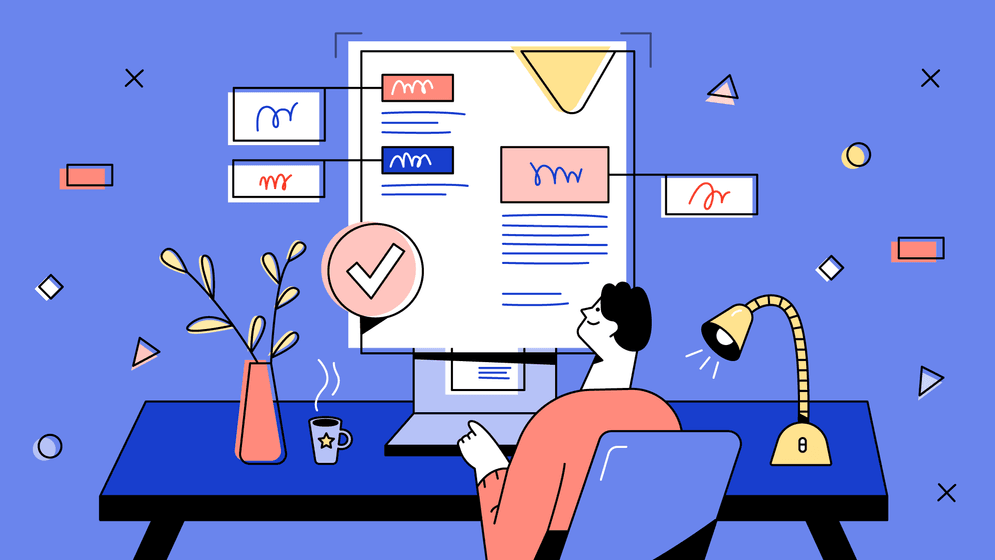
Table of contents
Like a good CV , a cover letter is an important part of a job application that offers further insight into your skills, experiences, and motivation for the role. A good cover letter should emphasise your fit for the position, showcase your understanding of the company, and express your enthusiasm for the job.
In this article, we cover:
What makes a good cover letter?
Cover letter sections.
Tips on how to write a cover letter.
Examples of good cover letters.
Let CVMaker guide you through the CV writing process, offering a professional first CV template to highlight your strengths.
Land more interviews with a good cover letter
A good cover letter is essential to a strong job application, providing additional details about your skills, experiences, and motivation for the role.
Clear structure : Maintain a well-organised format that is easy to follow. This applies to both letters of interest and shorter cover letters.
Tailored content : Customise the content to highlight your suitability for the specific position and company.
Professional tone : Use a professional and positive tone throughout the letter.
Key sections of a good cover letter
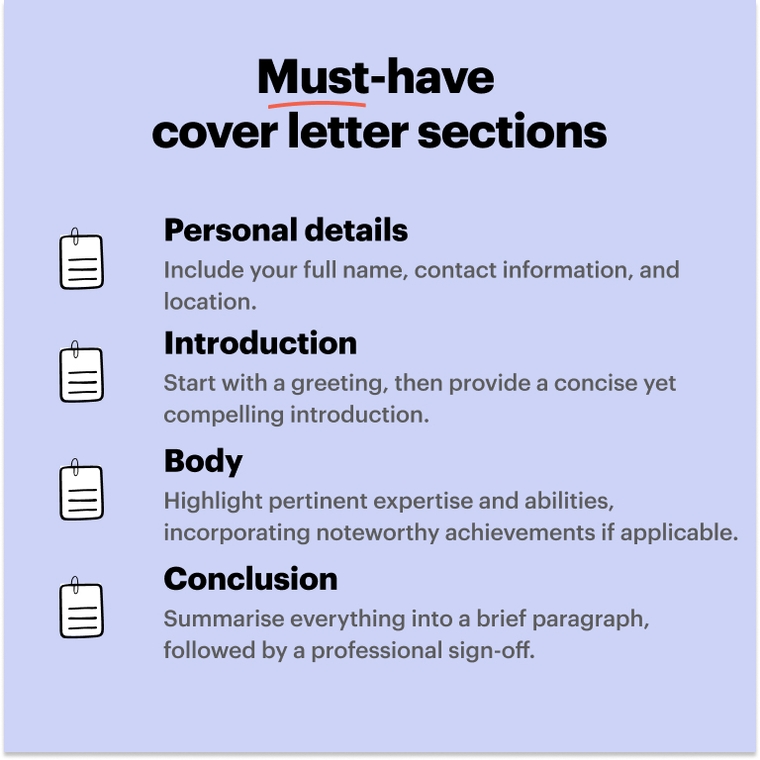
By following this cover letter structure and ensuring your cover letter is tailored to the specific job and company, you can create a strong application.
5 tips for how to write a cover letter
A well-structured cover letter is essential. By following the tips below, you can enhance your chances of securing more interviews.
1. Tailor your cover letter to the job
Customise your cover letter for each application to align with the specific requirements and responsibilities of the position. Address the company by name and, if possible, the hiring manager personally to show genuine interest.
Care assistant cover letter example:
Dear Hiring Manager, I am writing to express my interest in the Team Lead position at Special Care Group, which I found listed on your website. Currently employed as a care assistant, I am actively pursuing opportunities within this location following my relocation to Scotland. As a dedicated care assistant, I have honed my abilities in effectively communicating with patients, collaborating with multidisciplinary teams, and implementing personalised care plans. My leadership style is guiding and supporting individuals to achieve personal and professional growth, fostering a sense of community within the caregiving team. In my past positions as a Care Assistant, I have consistently showcased my dedication to delivering compassionate and top-notch care to individuals, cultivating a positive and supportive atmosphere. My proficiency in mental health and elderly care positions me well to cater to the distinct needs of each person, fostering their well-being and elevating their quality of life. I am eager to explore how my skills and experiences can positively impact the success of Special Care Group. Thank you for reviewing my application. I anticipate the opportunity for an interview to delve deeper into how my background aligns with the requirements of your organisation. Sincerely, Emma Thompson Attached: CV & references
For the full CV writing guide, check out the care assistant cover letter example.
Retail cover letter example:
Dear Hiring Manager, I am writing to express my strong interest in the Retail Store Manager position at H&M. With a proven track record in retail management and a passion for driving success; I believe I would be a valuable addition to your team. My background in retail management spans over five years, including my most recent role as a Retail Store Manager at Ralph Lauren. During my tenure, I honed my skills in leadership, sales, and customer service, which I am confident can directly benefit H&M. Having progressed through a series of roles and responsibilities; my experience has equipped me with the ability to navigate high-pressure and fast-paced environments while consistently delivering positive results. I take pride in my sales techniques and am known for inspiring and motivating colleagues to maximise their performance. I am committed to fostering a customer-centric approach and driving the store's growth. With a keen eye for detail and a dedication to excellence, I am confident I can meet and exceed your expectations in this role. H&M's mission and values resonate with my professional goals, making this opportunity exciting. I am confident that my communication skills, attention to detail, and resultsoriented mindset will contribute to the continued success of your company. Thank you for considering my application. I look forward to hearing back from you! Sincerely, William Evans Attached: CV and references
Are you a student seeking a part-time job? Explore the guides below or discover the best jobs for students.
Retail cover letter.
Student cover letter.
Graduate cover letter.
2. Showcase your achievements
Use specific examples to demonstrate your accomplishments and skills. Quantify achievements to provide concrete evidence of your impact. For additional examples and guides on writing cover letters, refer to the following:
1. Engineer:
In my previous role as a Software Developer , I developed an automated testing framework that reduced the time spent on manual testing by 50%, which significantly improved the team's efficiency and product release timelines.
As a Civil Engineer , I managed a construction project that was completed three months ahead of schedule and 10% under budget, resulting in substantial savings for the client.
2. Accountant:
In my role as a Senior Accountant, I implemented a new accounting software system that streamlined our financial reporting process, reducing the time required to generate monthly reports by 30%.
As a Tax Accountant, I identified tax savings opportunities for clients, resulting in a cumulative tax savings of £200,000 over two years.
3. Architect:
While working as an Architect , I led the design of a sustainable office building that achieved LEED Platinum certification, which reduced the building's energy consumption by 25%.
As a Landscape Architect, I designed a public park that increased community engagement and was recognised with a national award for innovative design.
4. Marketing Manager:
As a Marketing Manager, I launched a social media campaign that increased our brand's online engagement by 60% and led to a 25% increase in sales over six months.
In my previous role, I developed and executed a content strategy that boosted website traffic by 40% and generated an additional £500,000 in annual revenue.
5. Project Manager:
As a Project Manager , I successfully led a cross-functional team to complete a £2 million project on time and within budget, resulting in a 15% profit margin increase for the company.
In my role, I implemented a new project management software that improved team collaboration and reduced project completion time by 20%.
6. Human Resources Manager:
As a Human Resources Manager, I developed a talent acquisition strategy that reduced the average hiring time by 25% and improved employee retention rates by 15%.
In my previous role, I introduced an employee wellness program that led to a 20% reduction in absenteeism and increased overall employee satisfaction.
7. Data Analyst:
In my position as a Data Analyst, I created a dashboard that provided real-time insights, reducing the decision-making time by 35% and enabling more strategic business actions.
As a Data Scientist, I developed a predictive model that improved customer retention rates by 18%, directly contributing to a 10% increase in revenue.
8. Teacher:
As a high school Math Teacher , I introduced a new curriculum that improved student test scores by 20% and increased overall class engagement.
In my role, I led an after-school tutoring program that helped struggling students improve their grades by an average of one letter grade.
9. Customer Service Manager:
As a Customer Service Manager, I implemented a new customer feedback system that reduced response times by 50% and increased customer satisfaction scores by 30%.
In my previous role, I trained a team that improved first-call resolution rates by 15%, leading to a significant increase in customer loyalty.
10. Sales Manager:
As a Sales Manager, I developed a new sales training program that boosted team productivity by 25% and increased quarterly sales by £1 million.
In my previous role, I led a team that expanded our client base by 20%, resulting in a 30% increase in annual revenue.
If you have no experience , refer to how to write a cover letter with no experience.
Customise one of our cover letter examples
3. keep it concise.
A good cover letter is typically one page long. Be concise and focus on the most relevant information, avoiding unnecessary details or overly complex language. For more information, refer to how to write a short cover letter.
With over five years of experience in project management, I have consistently delivered projects on time and within budget, leveraging my strong organisational skills and attention to detail.
4. Use a professional tone
Maintain a professional yet friendly tone in your cover letter. Avoid jargon or overly formal language, and proofread carefully to ensure it is error-free and reflects your communication skills.
I am confident that my background in customer service, combined with my dedication to delivering exceptional experiences, aligns perfectly with the customer-focused culture at Creative Sparks.
5. End with a strong closing
Summarise your key points and express your eagerness to discuss how your skills and experiences align with the job. Include a call to action, such as requesting an interview or a follow-up meeting.
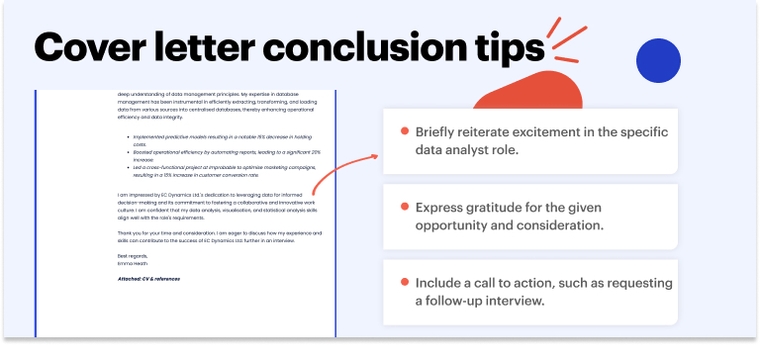
For additional tips and examples, take inspiration from guides on how to end a cover letter, or explore our extensive collection of cover letter examples.
Key takeaways
A good cover letter is tailored, concise, professional, and highlights your achievements. Customise each letter to the specific job and company. Provide concrete examples of your skills and accomplishments. Maintain a professional tone and end with a strong conclusion.
Next steps?
Refine your CV effortlessly using our user-friendly builder, which offers a diverse array of templates. For impeccable results, consider our professional CV Writing Service . Utilise our CV examples to save time, emphasise important sections, and help hiring managers grasp your distinctive professional strengths more easily.
What is in a good cover letter?
A good cover letter includes a tailored introduction, highlights of your relevant skills and experiences, specific achievements, and a strong conclusion.
What is a good cover letter format?
A good cover letter format includes your contact information, the employer’s contact information, a personalised salutation, an engaging introduction, a body with relevant details, and a strong closing.
What is the ideal length of a good cover letter?
The ideal length of a good cover letter is one page, typically 250-400 words. Refer to our guide on cover letter length for more information.
What makes a good cover letter intro?
A good cover letter intro grabs the employer's attention by mentioning the job you are applying for, where you found the job listing, and a brief statement about why you are interested and qualified. Refer to how to start a cover letter for more tips.
Do employers read cover letters in the UK?
Yes, many employers in the UK read cover letters as they provide additional context about the candidate’s skills and motivations. Although practices may vary depending on the employer.
What is an example of a good covering letter?
An example of a good covering letter includes a tailored introduction, specific achievements relevant to the job, a professional tone, and a strong closing that calls for further action, such as an interview . Examples are provided in the sections above for various job roles.
Start creating your CV
Create a professional CV quick and easy with our advanced CV Builder
Updated July 05 2024
Karien has established herself as a leading figure in the career services industry, crafting over 800 professional documents and assisting job seekers globally with reviews such as "I'd hire me". Renowned for her expertise, she continues to empower individuals, specialising in creating resources to aid job seekers in securing employment and staying ahead in the ever-evolving job market. Start here today!
Related articles

- · Jul 05 2024
- · 8 min read
10 Tips on How to Improve Your CV with Examples!
by Artöm Obenko

- · Apr 04 2024
- · 5 min read
How to Explain Unemployment on a CV

- · Jun 10 2024
- · 4 min read
How to Highlight Your Strengths on a CV
Land the interview for your dream job with cvmaker.
Effortlessly create your professional CV within 10 minutes and download it whenever and wherever you want!
Increase your chances of landing your dream job with CVMaker.
Search RH Smith Office of Career Services
- Graduate Students
- Undergraduate Students
- Ways to Engage
- Meet our Employer Relations Team
- Employment Statistics
- Getting Started
- Business Management
- Consumer Products, E-Commerce and Retail
- Entrepreneurship
- Government, Nonprofit & Education
- International Business
- Real Estate & Construction
- Sports, Entertainment & Hospitality
- Supply Chain Management & Operations
- Technology & Analytics
- Career Exploration
- Job Search Strategies
- Resume & Cover Letter
- Interview Preparation
- Offer Decision-Making & Negotiation
- Professional Competencies
- Technical Competencies
- Graduate School Preparation
- Student Outcomes
- Meet the Team
7 Essential Tips on How to Format a Cover Letter
- Share This: Share 7 Essential Tips on How to Format a Cover Letter on Facebook Share 7 Essential Tips on How to Format a Cover Letter on LinkedIn Share 7 Essential Tips on How to Format a Cover Letter on X
7 Essential Tips on How to Format a Cover Letter was originally published on Resume.io .

When you come to writing one of the most important letters in your life, you may need a few ground rules to help you to get started with the format of your cover letter.
That blank page can look awfully daunting otherwise.
Here are some must-follow tips around the structure and content of your cover letter:
Well-designed header
The header section of the cover letter should be attractive and space efficient. Graduates might be tempted to select a header design that reduces the amount of space that they need to fill for their cover letter, but you will have more to say than you think.
The header should contain all essential contact details (in addition to those on your resume) – full name, email, and mobile. You don’t have to include your full address and you definitely don’t have to include the “inside address” of your employer.
Mouthwatering intro
The intro of a recent grad or early career cover letter should be far more than a “this is what I want out of my career.” The hiring manager understands that you want the job – applicants need to prove to them that they are worthy of it. Make a compelling case.
The cover letter introduction should lead with your most relevant accomplishment for the role in question, with a hint of personality around how you achieved it. Avoid a generic cover letter that you send to everyone – you might not have much experience, but you should still strive to be as selective as possible.
Only relevant career stories with context
The length and content of your cover letter should be dictated by the amount of relevant experience that you have to share. Do not feel that you need to fill a page by parroting the responsibilities of the role or long lists of skills and personality traits without evidence.
Empty space is better than empty words – employers will value quality over quantity for the early career professional. What they want to understand in the cover letter is that you understand the demands of the role and can justify why you think you will do a good job.
Conclusion with call-to-action
End the conclusion of the early-career cover letter with a final detail about your personality and motivation and share your interest in learning more about the role. Saying that you hope to have the opportunity of an interview to learn more about the role is a powerful call-to-action which demonstrates your belief in yourself. Remember to keep the tone hopeful.
After the raw content come the syntax and visual choices:
Powerful action verbs
When you only have a certain number of sentences to create a favorable impression, your choice of verb can have a surprising impact on how your messages are received. Insightful action verbs can add a new level of meaning. Did you “manage” or “orchestrate” a project?
A word of warning: sprinkle action verbs and other buzzwords liberally. The cover letter should read like a conversation starter, so ensure that it sounds natural enough.
Impactful fonts, sensible sizes, and shot paragraphs
Increasingly the font size to take up more space on the page will fool no one. Stick with a standard 10 or 12 size and choose a suitable professional font that is easy to read.
Use short 2-4-line non-indented paragraphs and leave a line between each one. Give the reader a natural break between each of your career stories and consider using bullet points for your greatest accomplishments (the ones that you can ideally quantify with numbers). The cover letter should be strictly no more than one page – ideally aim for 3/4 of a page.
Right choice of template
Finally, very few cover letters or resumes are send as a blank word document these days. There are a wide choice of resume and cover letter templates – it is a great idea to use the same visual look for both your cover letter and resume. When a hiring manager is viewing a large number of candidates, this association will stick in their minds.
There is a subtle art to writing a persuasive cover letter when you do not have experience.
Strike a balance between outlining hopes for the future and sharing the greatest hits from your past. Your future employer will want to understand both.
If you are curious to explore further (you should be), the following article from Resume.io provides substantial further food for thought: “ How to Format a Cover Letter in 2022: Examples and Tips ”
Pardon Our Interruption
As you were browsing something about your browser made us think you were a bot. There are a few reasons this might happen:
- You've disabled JavaScript in your web browser.
- You're a power user moving through this website with super-human speed.
- You've disabled cookies in your web browser.
- A third-party browser plugin, such as Ghostery or NoScript, is preventing JavaScript from running. Additional information is available in this support article .
To regain access, please make sure that cookies and JavaScript are enabled before reloading the page.
What you need to know for NBC's 2024 Paris Olympics coverage
Editor’s note: Simone Biles made her third Olympic squad , highlighting the U.S. Olympic women's gymnastics team for the Paris Games.
NEW YORK — Embarking on its 18th Olympics broadcast, NBC Sports is banking on a different experience for viewers for what is being billed as the “best reality show in the world" when the Summer Games kick off with the opening ceremony in Paris on July 26.
With the coronavirus pandemic effectively in the rearview mirror, the coverage will look much different from Beijing and Tokyo, as there will be spectators in person (more than 10 million tickets have been sold, according to NBC), more celebrity presence (including podcaster Alex Cooper and rapper Snoop Dogg ), plus the broadcast of 32 different sports, with the two newest additions, kayak cross and breaking.
NBCUniversal unveiled its plans for extensive coverage during an event at Rockefeller Center on Wednesday, commemorating being 30 days from the opening ceremony. Because Paris has a six-hour time difference from the East Coast of the United States, most of the live sports will take place in the afternoons, including the swimming, track and gymnastics finals.
Get Olympics updates in your texts! Join USA TODAY Sports' WhatsApp Channel
Peacock, NBCUniversal’s streaming service, launched four years ago, was integral in getting new customers to sign up to watch the Olympics. But according to NBC executives, it wasn’t smooth sailing. The experience wasn’t what they expected, and this time, the main focus was modernization.
“We didn’t do a very good job of delivering to our customers,” Mark Lazarus, Chairman of NBC Universal Media Group, said, adding that Peacock will be the go-to destination for any live event.
“We will have the best drama, the best reality, and the best comedy show all rolled into one,” said Rick Cordella, president of NBC Sports.
Overall, NBC will present over 7,000 hours of coverage throughout the 17 days of competition. The opening ceremony will be on July 26, starting at 1:30 p.m. ET, with a repeat broadcast in primetime.
Olympics Host Mike Tirico, along with Kelly Clarkson and Peyton Manning, Today hosts Savannah Guthrie and Hoda Kotb will commentate as athletes in boats make their way down the River Seine.
Before the opening ceremony, a four-minute short film, "Land of Stories, " narrated by Oscar-winning film director Steven Spielberg, will also debut.
A three-hour curated show called “Primetime In Paris”, will be broadcast at 8 p.m. ET which will advancing the most compelling stories, with in-depth analysis, with limited commercial interruption during the final hour.
Whether that pays off for NBC’s bottom line is another story, as NBCUniversal is paying $7.65 billion to televise the Olympics through the 2032 games.
The Tokyo Games in 2021 were the least-watched Olympics on record averaging 15.6 million viewers, a more than 50% drop from the 2012 London Games, which averaged over 31 million a night.
Recommended
Mainstream media’s cover-up of biden’s decline: letters to the editor — july 4, 2024.
- View Author Archive
- Get author RSS feed
Thanks for contacting us. We've received your submission.

The Issue: Mainstream media outlets beginning to report on President Biden’s cognitive decline.
Nobody, including the left-leaning media, “suddenly realized” that President Biden has suffered a disastrous decline in mental acuity (“ Media suddenly realizes Biden is addled, ” July 3).
They knew it all along and helped lead the charge to cover it up until it became too obvious.
Just imagine if Biden were a Republican: They would’ve hounded him out of office. But being a Democrat, Biden got a free pass and unwavering support, until it all collapsed like a house of cards.
Max Wisotsky
Highland Park, NJ
The New York Times has brazenly bragged through the years with its catchy masthead that it runs “all the news that’s fit to print.”
However, in recent years, there has been at least one major exception to that journalistic slogan: That would, of course, be Biden’s greatly diminished mental capacities.
Finally, the Times decided that this was news fit to print after everyone became keenly aware of Biden’s increasingly declining faculties. Hardly a brave or prescient move.
Frank Brady
The media have been in bed with the Democratic Party, covering up for this babbling fool of a president for more than four years.
Now, after the American people have seen with their own eyes how the debate went, there is no way for them to cover for this disaster of a presidency.
Dan Gardner
Staten Island
Many journalists made the recent discovery that President Biden has signs of cognitive decline.
Beginning during the 2020 election, it was obvious to those with eyes that then-candidate Biden was being hidden and protected.
Yet the media refused to investigate this or any further sheltering of Biden for four more years. The media must be held accountable for this malpractice.
Ralph LaMagna
I think most people paying attention knew Biden was not well.
The Democrats and progressives in the media hid it from the American people. Winning an election is more important to them then the well-being of America.
Let’s get Manhattan District Attorney Alvin Bragg on this. I’m sure he could come up with a few felony charges for true election interference.
Bruce Collins
Middletown, NJ
Get opinions and commentary from our columnists
Subscribe to our daily Post Opinion newsletter!
Thanks for signing up!
Please provide a valid email address.
By clicking above you agree to the Terms of Use and Privacy Policy .
Never miss a story.
The Issue: FDNY Commissioner Laura Kavanagh’s scathing criticism over the FDNY’s male workforce.
As a former FDNY member, I know for a fact that most current members have little-to-no respect for FDNY Commissioner Laura Kavanagh (“ Commish’s ‘fire’ ire, ” June 30).
It’s not because she’s a woman, but because she’s a leftist who doesn’t like the fact that the department is still mostly male. Her bending over backward in an attempt to kiss up to a fellow leftist and Trump-hater, Attorney General Letitia James, is no surprise.
Liberals used to advocate for free speech. However, now they only advocate for speech they agree with. Those who booed James had every right to, and this nothing-story should have been put to bed a while ago.
Frank Perry
Morristown, NJ
Laura Kavanagh has absolutely no right to be sitting in the seat of commissioner of the FDNY.
She has the appointment by way of our fool of a mayor. She has never been a firefighter; all she ever was a marathon runner, stair climber and political hack for former President Barack Obama.
It is a disgrace that this incompetent fool is commissioner over all the men who put their lives on the line every single day — of which she knows practically nothing about.
Walter Faust
Want to weigh in on today’s stories? Send your thoughts (along with your full name and city of residence) to [email protected]. Letters are subject to editing for clarity, length, accuracy, and style.

IMAGES
VIDEO
COMMENTS
4. Mention something newsworthy. Start your cover letter with evidence that you've done your research. If the company you're applying for was recently in the news, mention it in the opening line and explain why you admire the company. Mention a specific event, fact, notable statistic or award the company recently won.
You'll get more into the details after your opening paragraph, of course. But your cover letter opener should still tell the reader, "This person can do something for us," rather than, "This job would really help them.". 4. Stick to the point. Your opener, while creative, should still be relevant to the job.
Here's a quick step-by-step guide on how to start a letter when you're trying o land a job: 1. Choose the Right Salutation. The salutation in your cover letter opening serves as a greeting. It's a chance to acknowledge the reader directly, even if just for a brief second.
Tips for beginning a cover letter. An engaging opening paragraph can go a long way toward winning over the employer from the start. 1. Include the essential elements. Your cover letter introduction should include the following information in the first couple of sentences: The position you're applying for; The company you're applying to
Here's a simple-but-powerful cover letter introduction template to use as an example: Dear [First Name], I was excited to come across the [Job Title] position at [Company Name]. As a [Current Job Title] with [# of Years] years of experience, I have become competent in [Relevant Skills & Job-Related Abilities].
List your name and contact information in the header. Address your letter to the hiring manager by name. Cite the job you want in the opening sentence. Feature your top skills and reason (s) you deserve the job in the first paragraph. Nailing the first paragraph may be the trickiest part.
That's the way to start a cover letter. You prove you're the exact person they need in just two sentences. Here are some other examples of accomplishments that deserve landing in the first paragraph of a cover letter: Raised revenue by 30%. Slashed project costs by $10,000. Boosted customer retention by 15%.
How to start a cover letter. To create an effective opening to your cover letter, follow these steps: 1. Convey enthusiasm for the company. If you are genuinely attracted to the company's brand or have used their products or services before, this is a great opportunity to say so. Employers value authentic enthusiasm because it often ...
Step 2: Add your contact info. At the top of your cover letter, you should list out your basic info. You can even copy the same heading from your resume if you'd like. Some contact info you might include (and the order to include it in): Your name. Your pronouns (optional) Your location (optional) Your email address.
1. Personalization. Address the hiring manager or recruiter by name whenever possible. If the job posting doesn't include a name, research to find out who will be reviewing applications. Personalizing your cover letter shows that you've taken the time to tailor your application to the specific company and role. 2.
8 ways to start your cover letter. Here's how you can start a cover letter in eight different ways: Show your enthusiasm. Highlight a mutual connection. Lead with an impressive accomplishment. Explain what you like about the company. Express passion for what you do. Tell a creative story. Include a belief statement.
Addressing a cover letter (including an email) Always place the company's name and address just before the greeting. If at all possible, find and include the name of the recruiter or hiring manager. (More on this coming up.) Use the same heading, font type, and font size as your resume to create a feeling of organization and flow.
Cover Letter Intro Example #5. I knew I had a knack for writing ever since I was the main editor of our high school magazine. Thanks to my 15+ years of experience, I've transformed my passion into a fashion blog with 30K+ monthly readers, featured articles on Time and Cosmopolitan that have garnered over 50K views, and a writer's workshop I ...
A cover letter should be formatted like a business letter with these sections: Header with date and contact information; Salutation or greeting; Opening paragraph; Middle paragraph(s) Closing paragraph; Letter ending and signature; Your cover letter should be one page long and use a simple, professional font, such as Arial or Helvetica, 10 to ...
Cover Letter Opening Sentence Examples. Personalize Your Cover Letter. What to Write in the Rest of Your Letter. Cover Letter Sample. More Cover Letter Examples and Templates. Photo: Theresa Chiechi / The Balance. Examples of opening sentences to use when writing a cover letter, with tips for how to start and what to include in each part of the ...
Cover letter tips, templates, and examples—from great opening lines to real samples that actually worked. Cover letter tips, templates, and examples—from great opening lines to real samples that actually worked. ... How to Start a Cover Letter: 30 Creative Opening Sentences Recruiters Will LOVE Cover Letters. by Lily Zhang Here Are 15 ...
Here are 5 effective ways to start your cover letter when you are submitting a job application.. 1. Introduce yourself in a professional manner. Let the employer know you are a serious and well qualified candidate for the job by introducing yourself in a direct and straightforward way. 2.
You should close your cover letter opening with a value proposition statement that covers three things: 1 It shows that you understand the needs and goals for the role. 2 It provides supporting evidence from your past (using measurable results) 3 It ties your results directly to the goals of the role.
A cover letter should include the following parts: Header. Salutation. Introduction. Body paragraph. Closing paragraph. Letter ending and signature. The following cover letter samples and examples will show you how to write a cover letter for many employment circumstances. Browse cover letters by job title for inspiration.
Helpful Cover Letter Introduction: "Dear [Hiring Manager's Name], In an increasingly digitized world, where customer-centric strategies are vital for business success, I am thrilled to apply for the [Job Title] position at HubSpot." Unhelpful Cover Letter Introduction: "To Whom it May Concern, I am applying for the [Job Title] position at HubSpot.
1. Begin by introducing yourself. To start your cover letter, introduce yourself. This means including your full name, your specific interest in the position and the reasons you've chosen to apply. If you got a referral to the job from another party, ensure to mention this in the first paragraph. 2.
Since your cover letter is the first chance you get to make a solid introduction to a new employer, spice it up a bit. Use some humor, indicate that you're passionate about the job you're pursuing, and inject some of your personality to entice hiring managers to actually read what you have to say.
Here are some tips on how to start your introduction: State the university you attend, your major, and what position you are applying for (if you are a student). Mention where you heard about the job. Mention the name of a professor or other contact who has a positive connection with the company. Bring up any previous conversations you have had ...
A good cover letter intro grabs the employer's attention by mentioning the job you are applying for, where you found the job listing, and a brief statement about why you are interested and qualified. Refer to how to start a cover letter for more tips. Do employers read cover letters in the UK?
The cover letter introduction should lead with your most relevant accomplishment for the role in question, with a hint of personality around how you achieved it. Avoid a generic cover letter that you send to everyone - you might not have much experience, but you should still strive to be as selective as possible. ...
Instead, your cover letter should go beyond your work history to talk about things that make you especially well-suited for the job. For example, if you're applying for an assistant job that ...
Keep the cover letter conclusion brief and explain that you look forward to the employer's response about possible next steps. Learn more: Sample cover letter for students; Cover letter checklist; CTHires has a cover letter builder and free workshops to help you write a great resume and cover letter. Harvard Business Review: How to Write a ...
SCIF Week 1 Tutorial Exercise: Understanding Science Job Advertisements and Cover Letters (35 minutes reading/discussing/group writing, 15 minutes critiquing, 7 minutes to present x 5 groups) In this exercise, the class first will be divided into 5 groups, each composed of two sub- groups, and each group will be given a job ad and the CV of a fictional person who wants to apply for this job.
Overall, NBC will present over 7,000 hours of coverage throughout the 17 days of competition. The opening ceremony will be on July 26, starting at 1:30 p.m. ET, with a repeat broadcast in primetime.
Mainstream media's cover-up of Biden's decline: Letters to the Editor — July 4, 2024 By . ... to [email protected]. Letters are subject to editing for clarity, length, accuracy, and style.